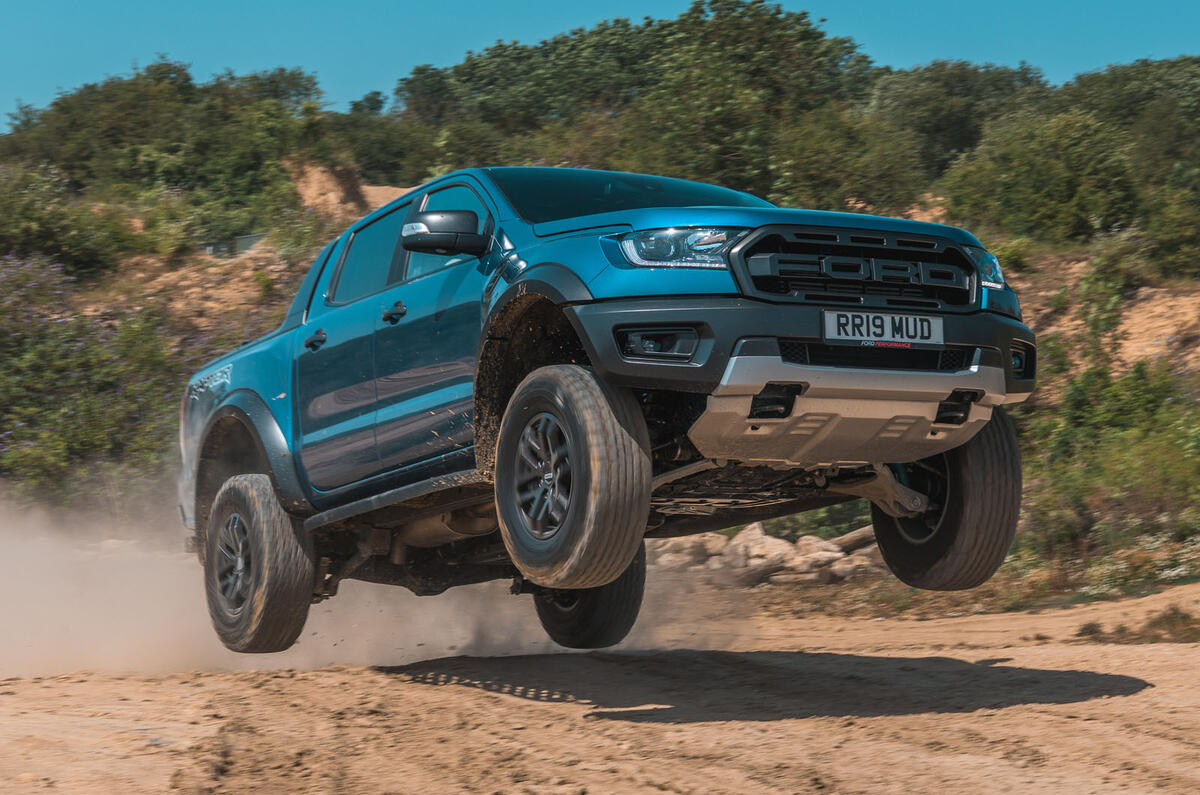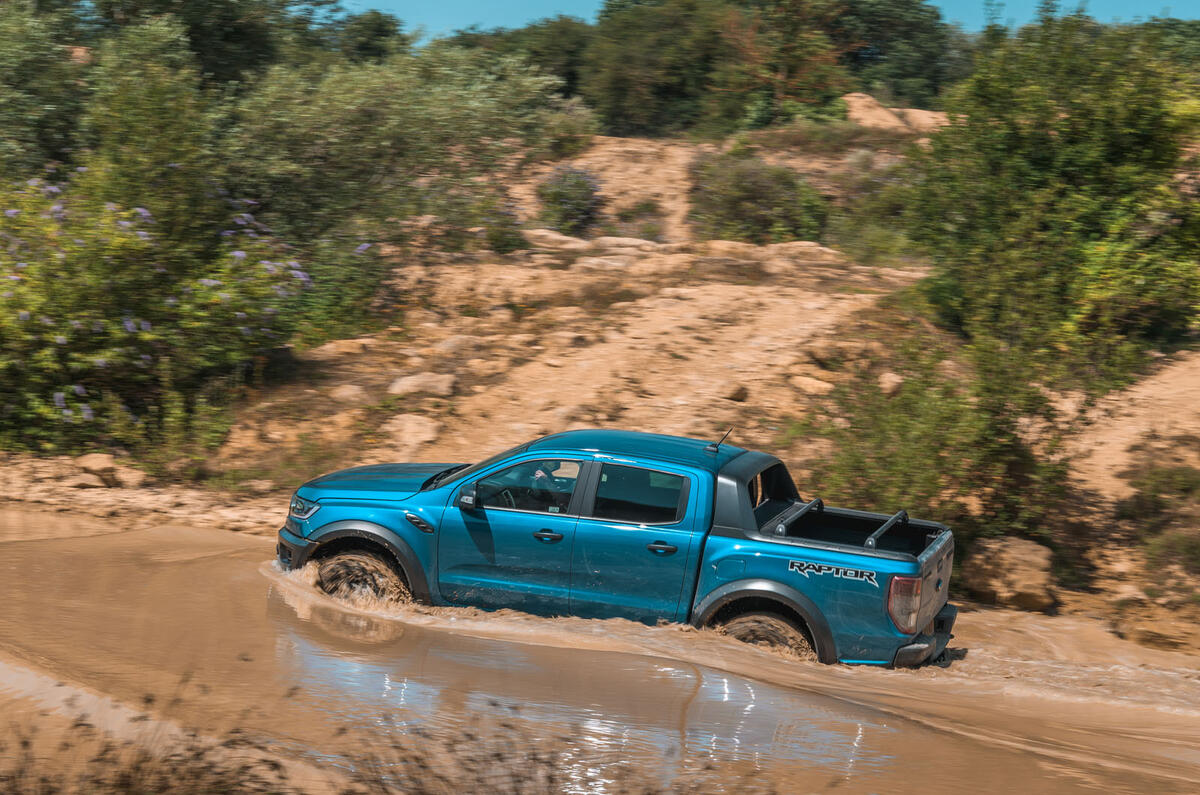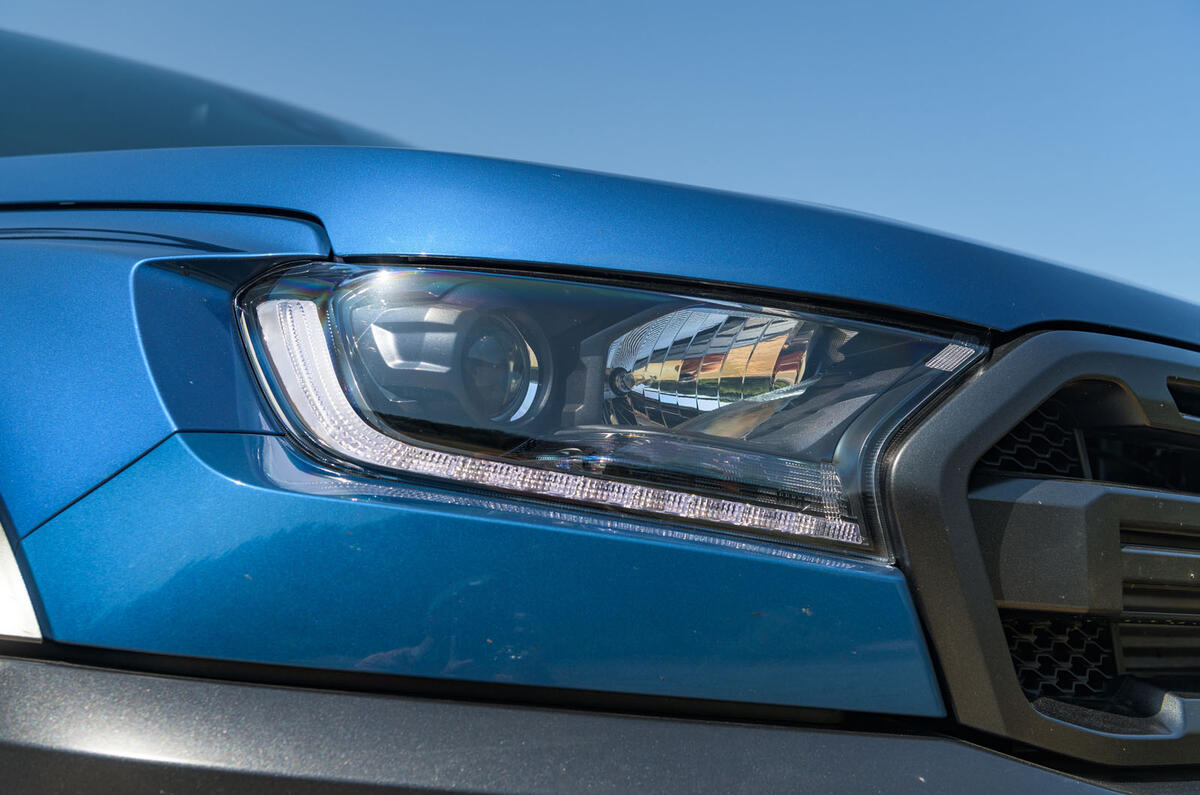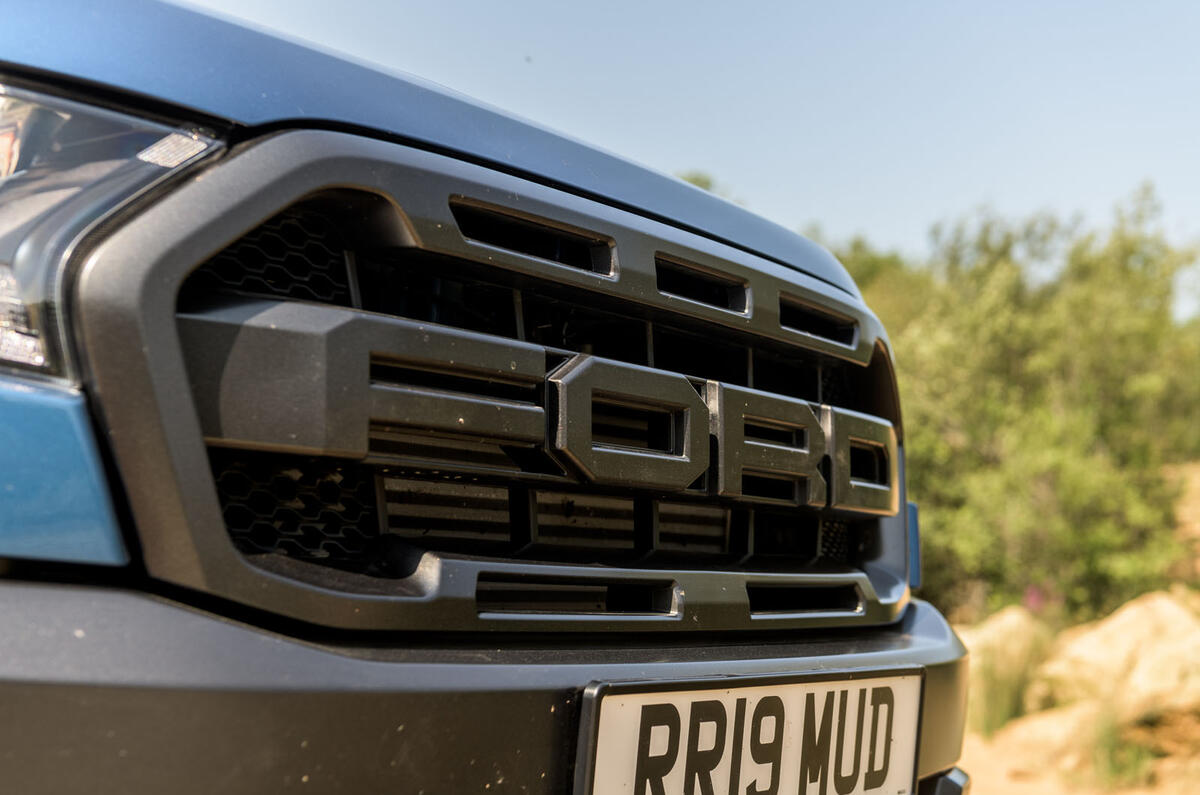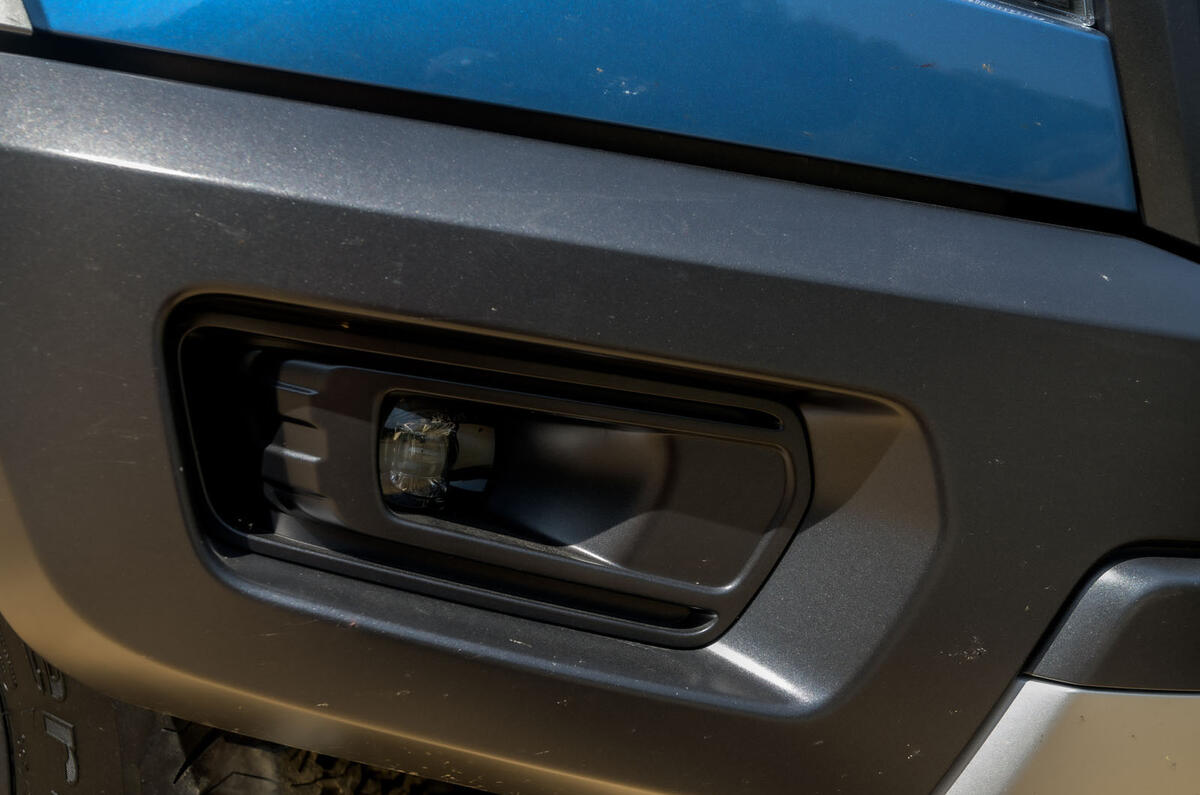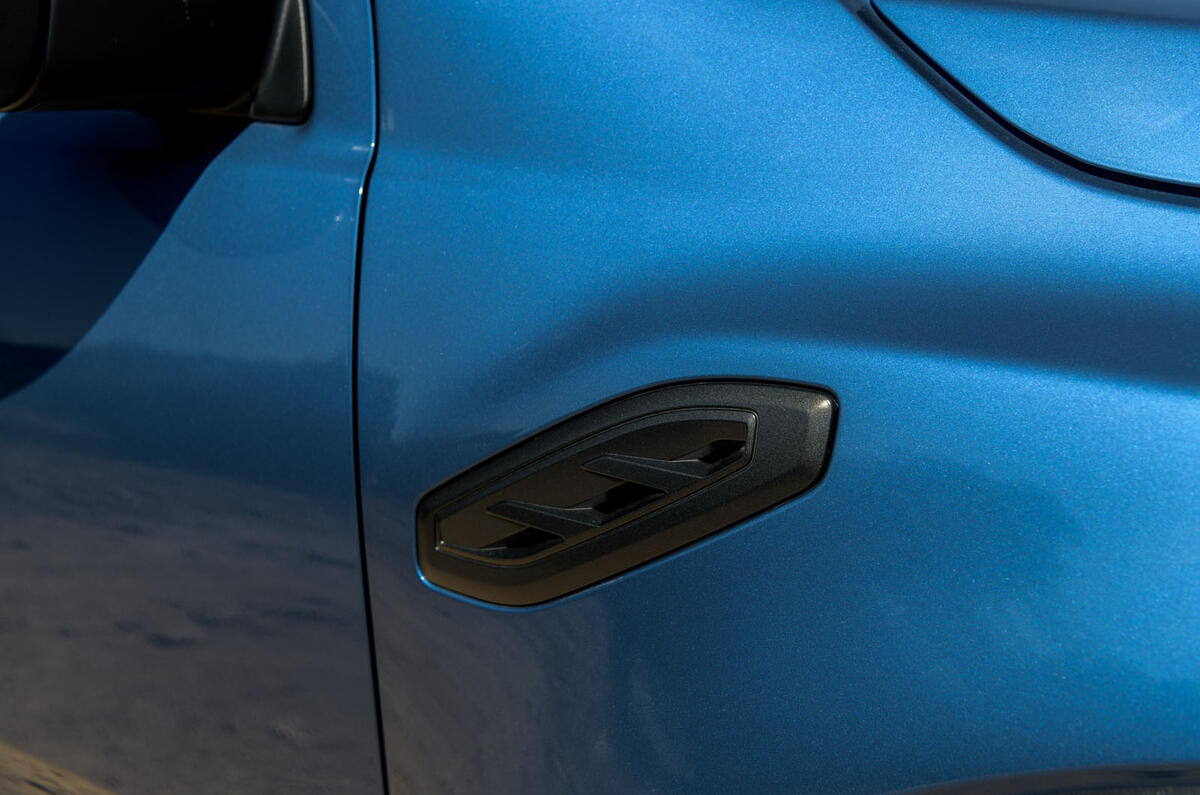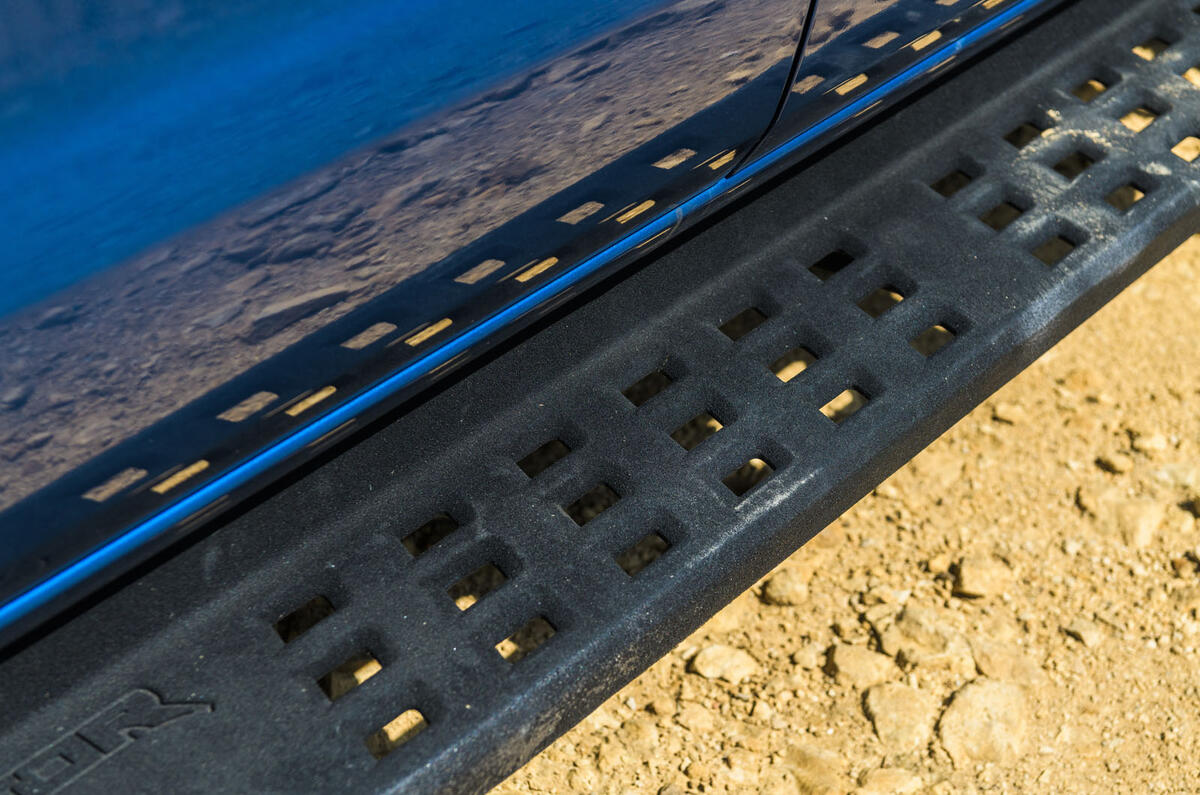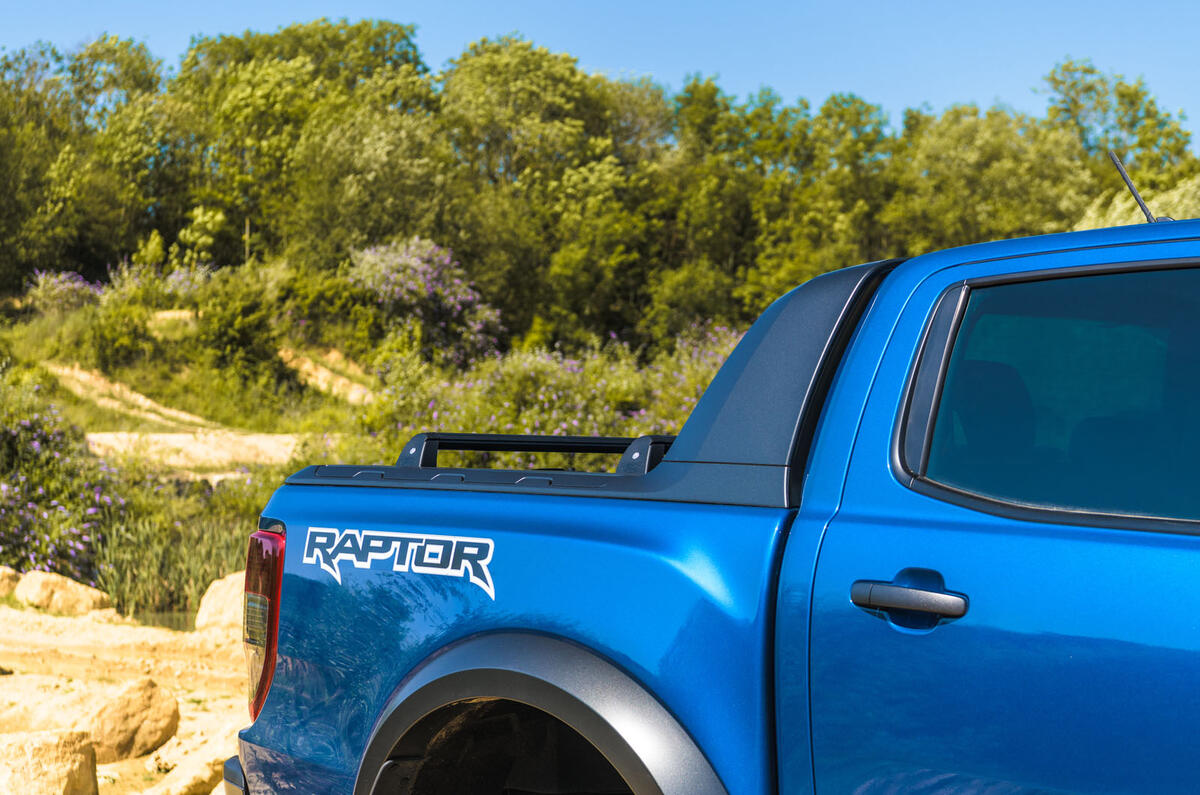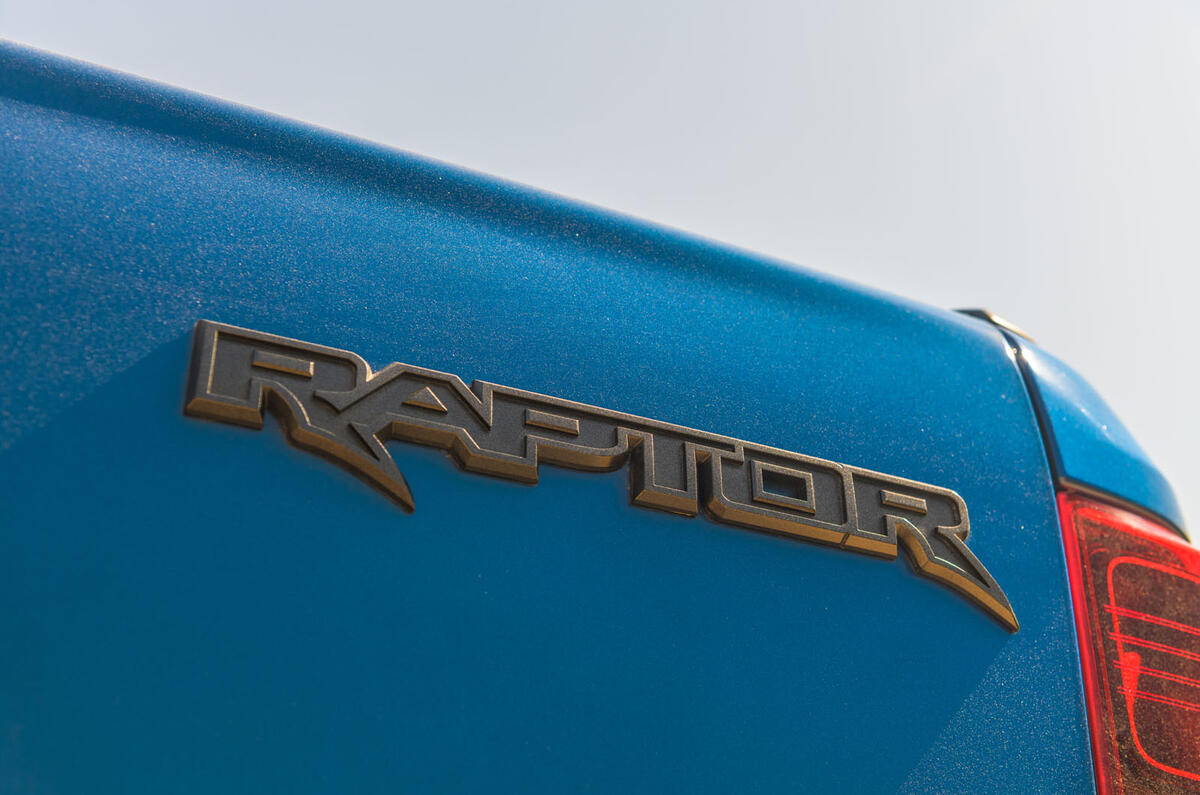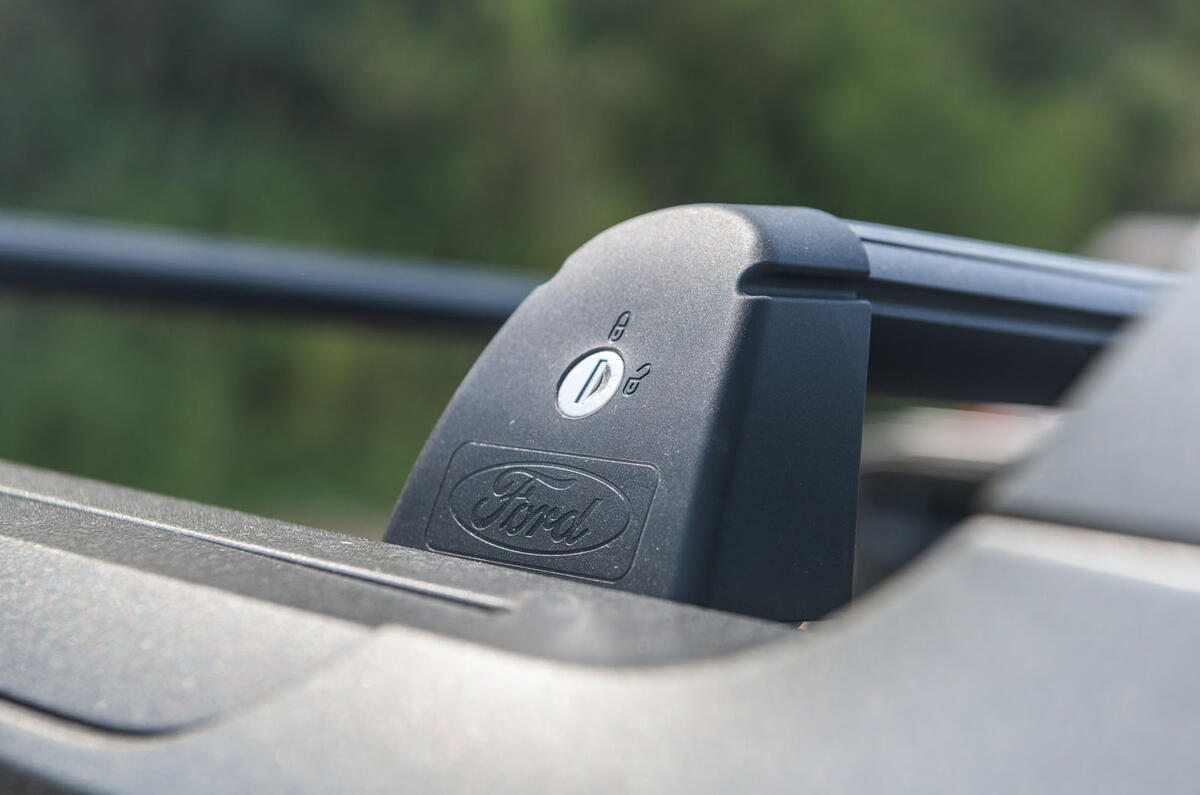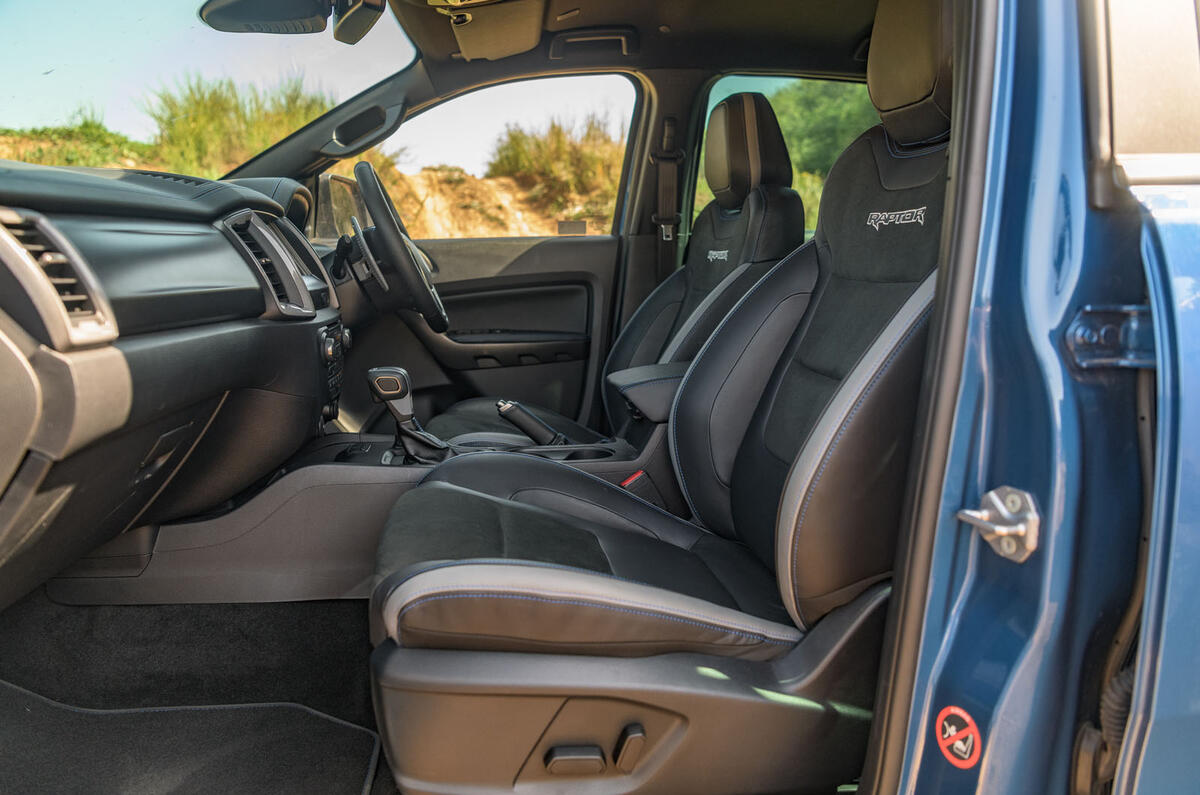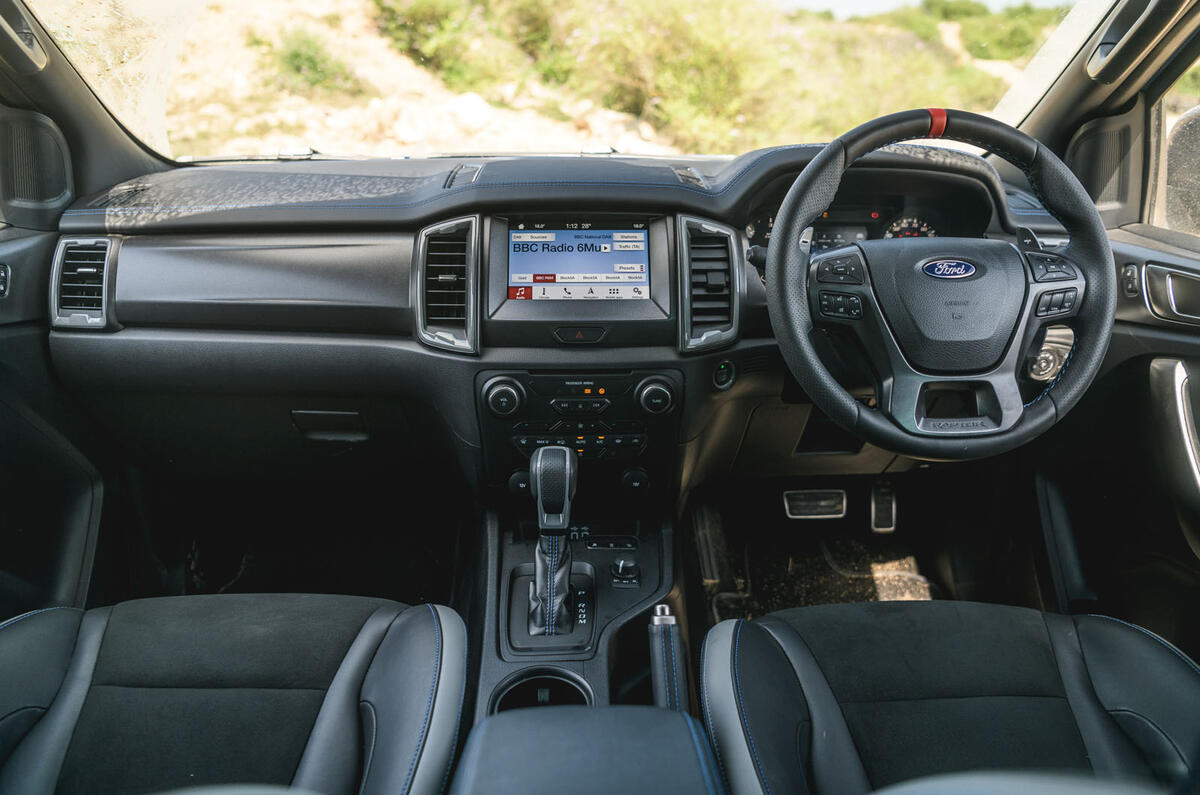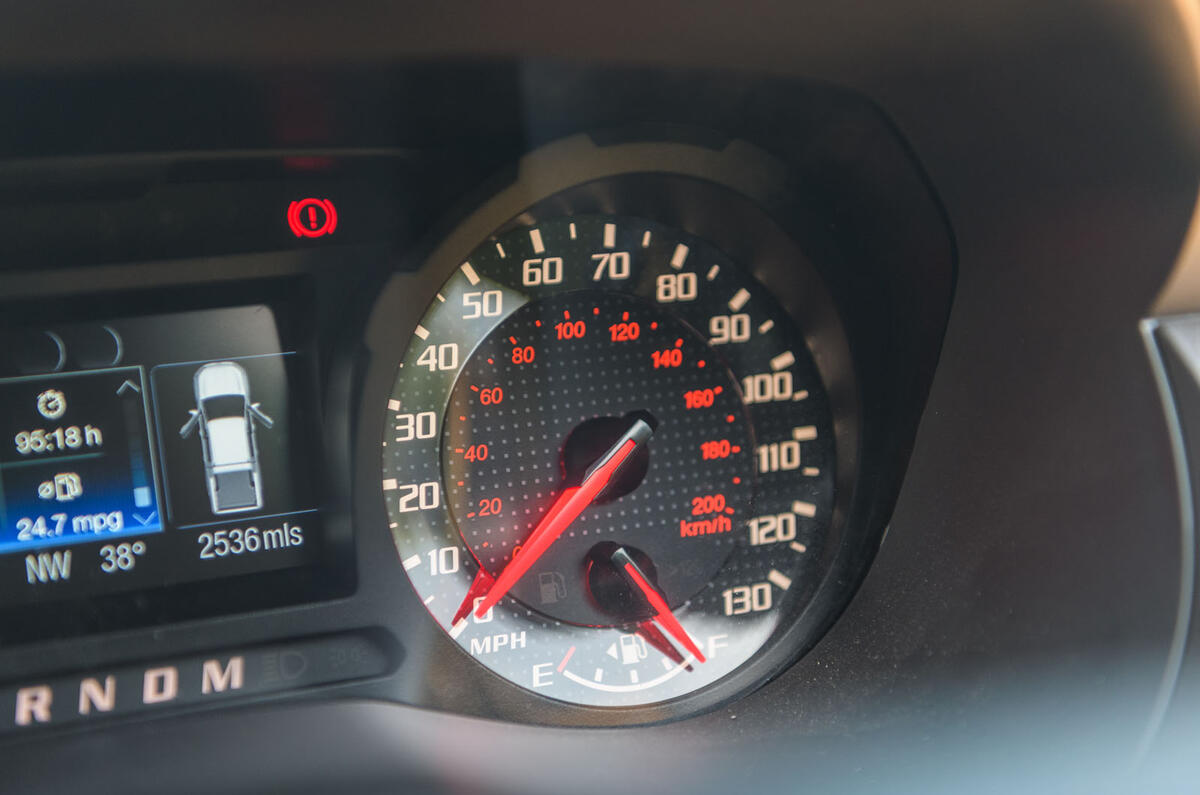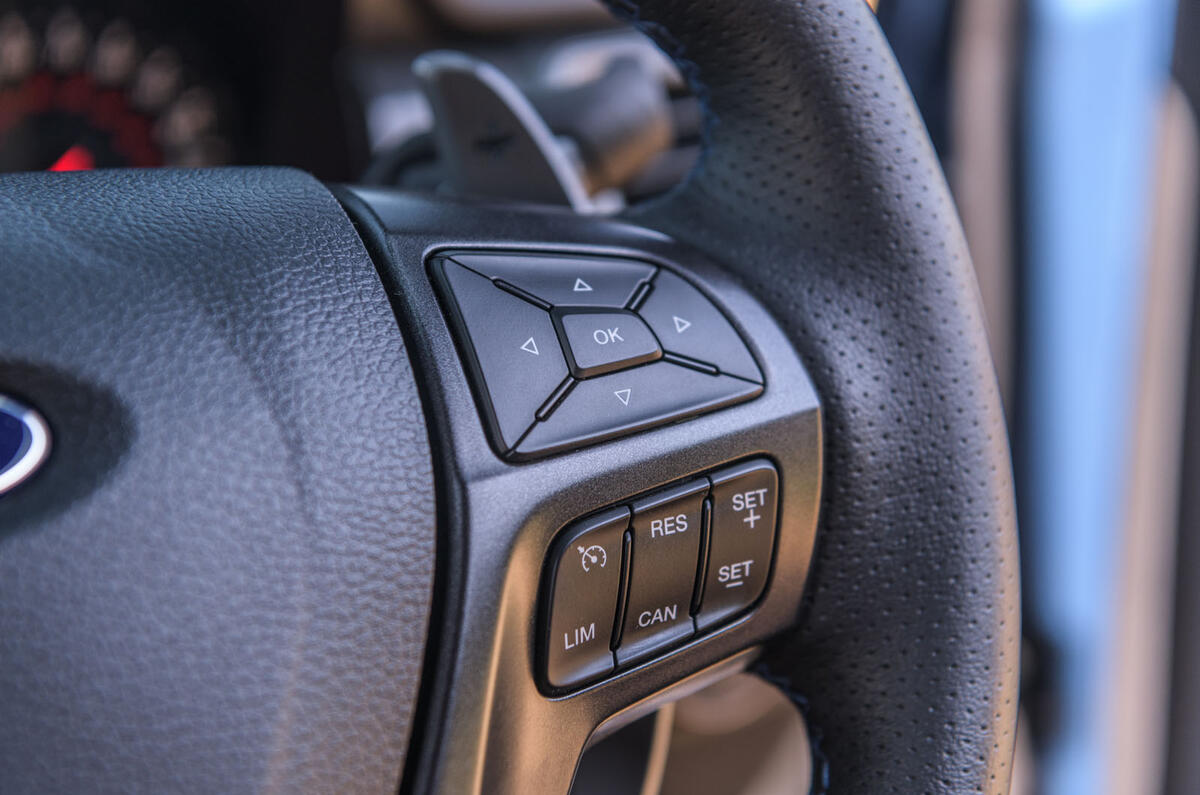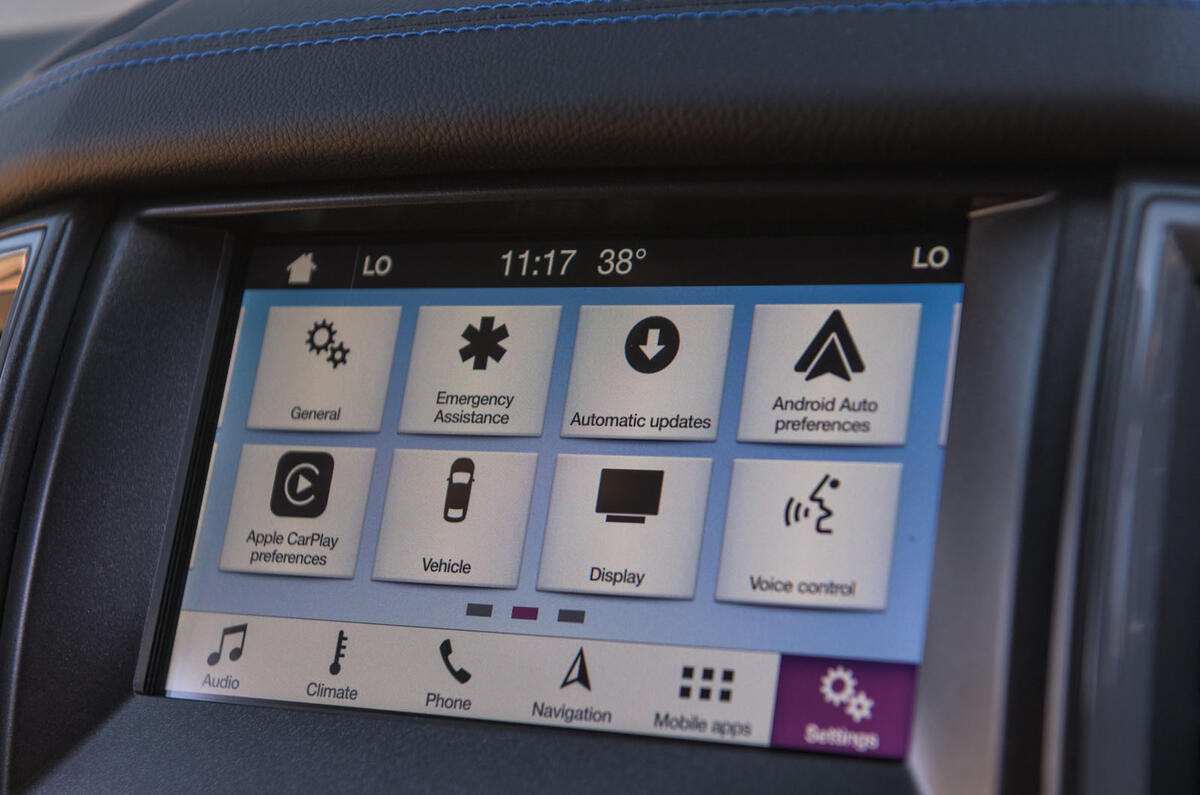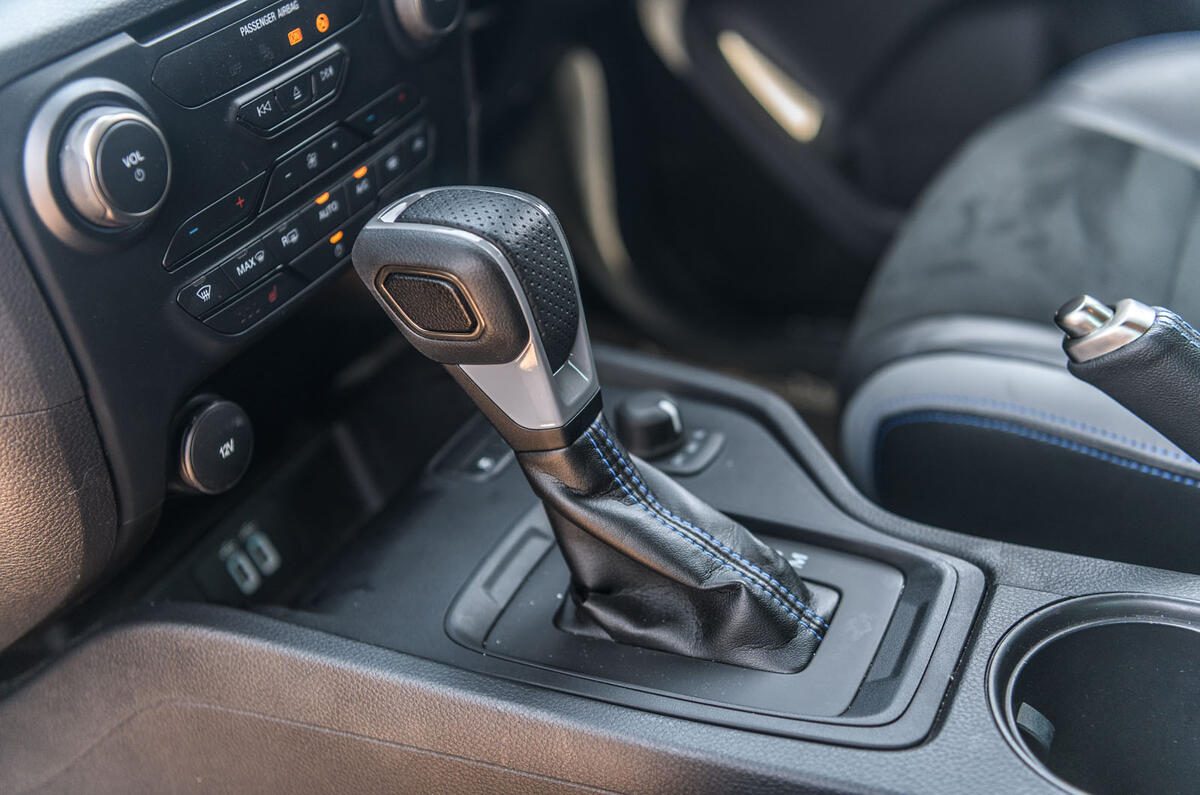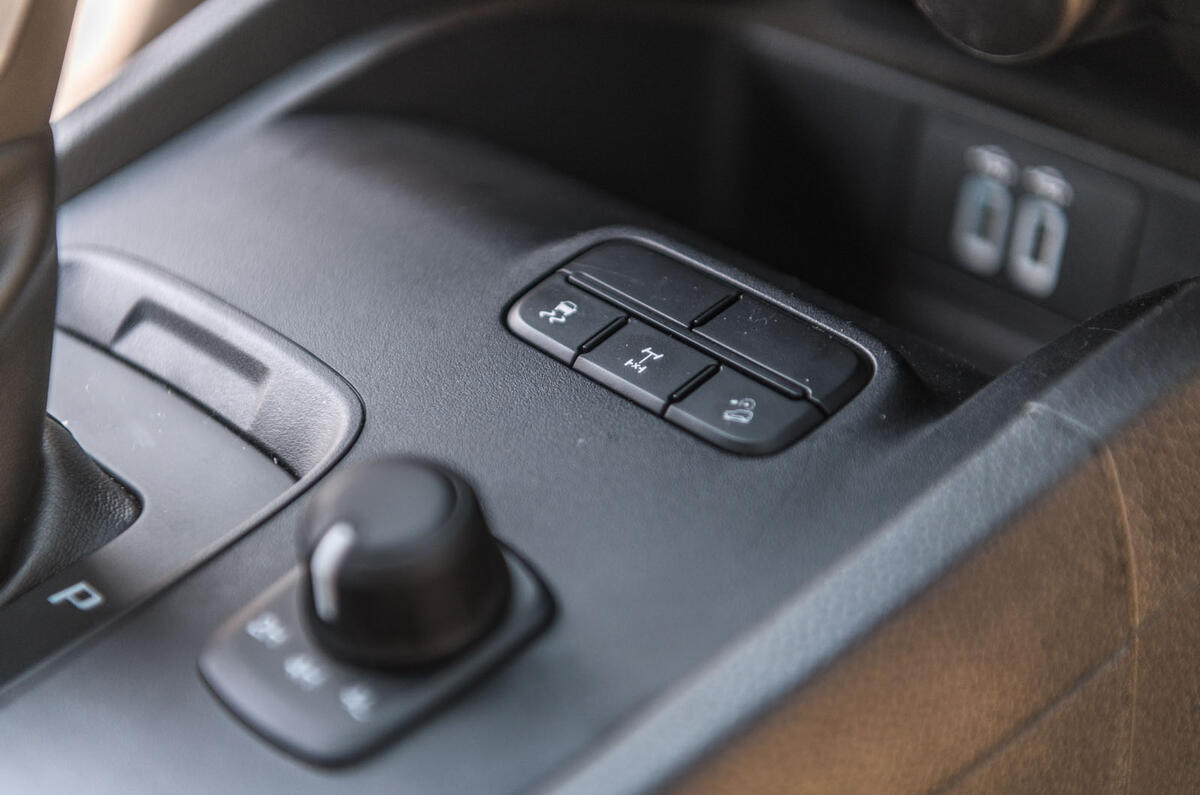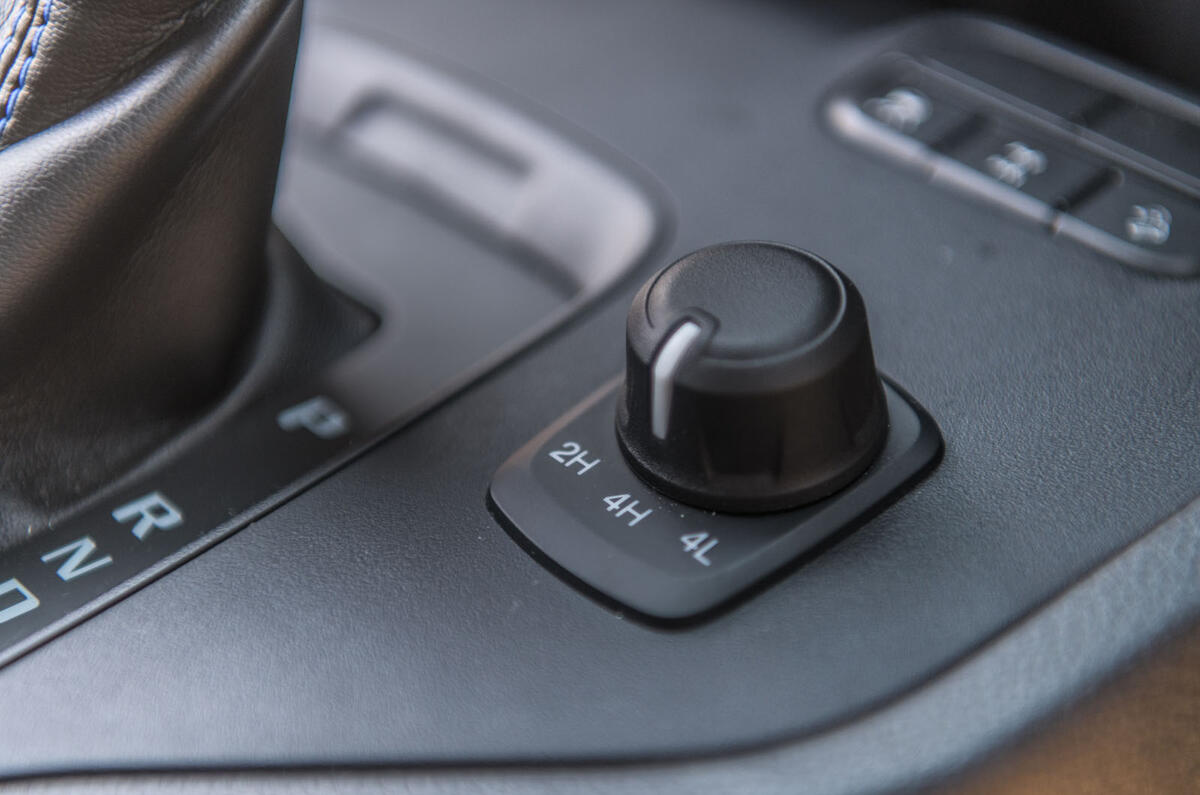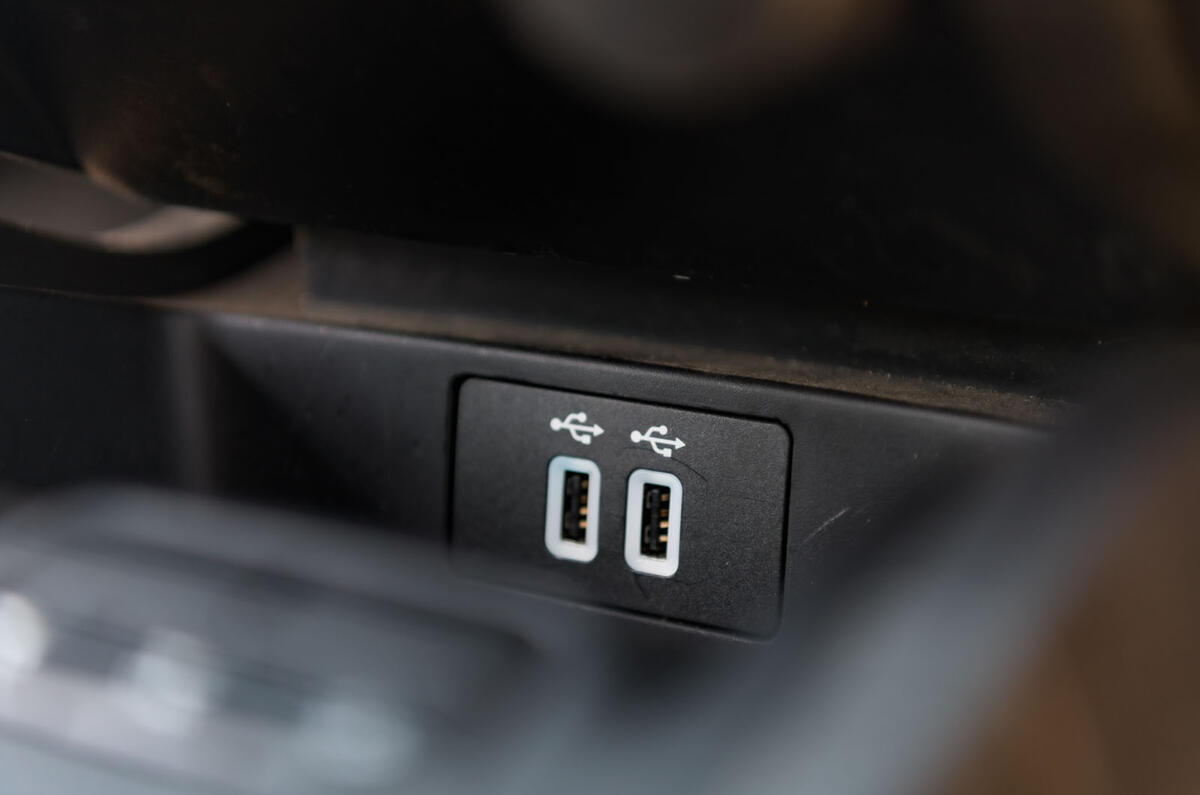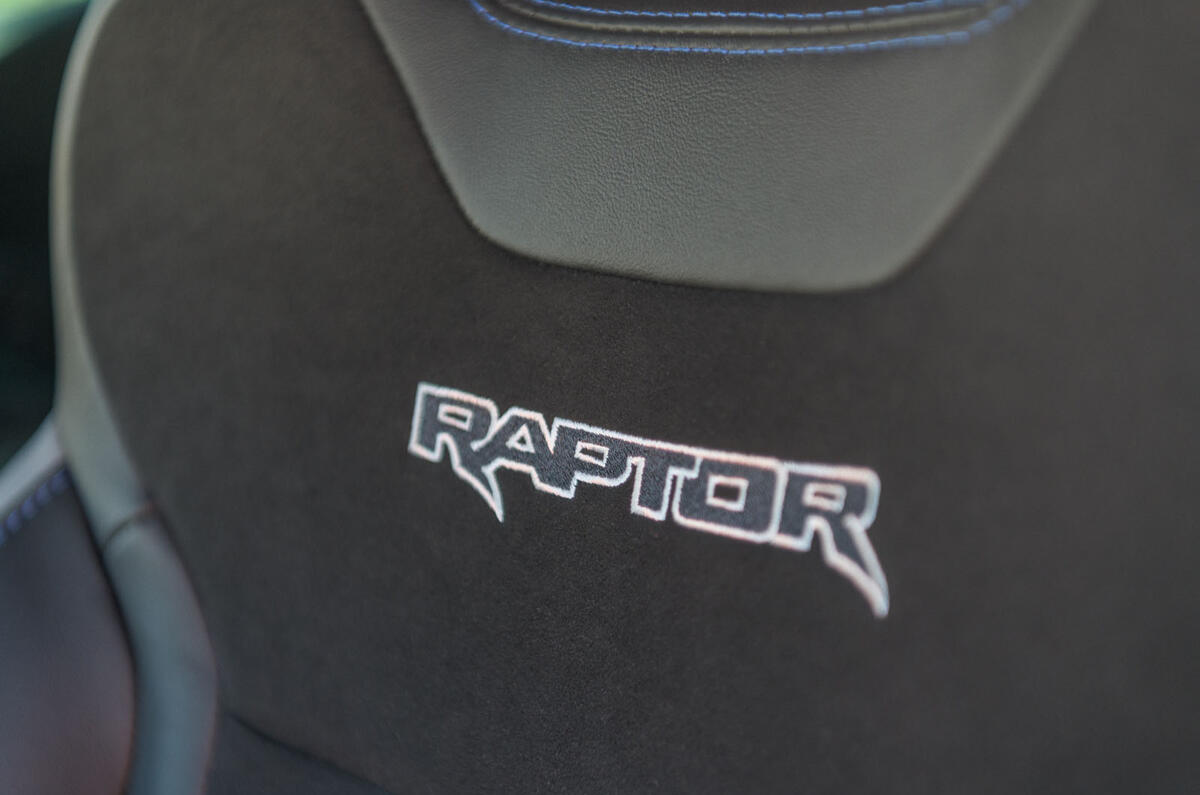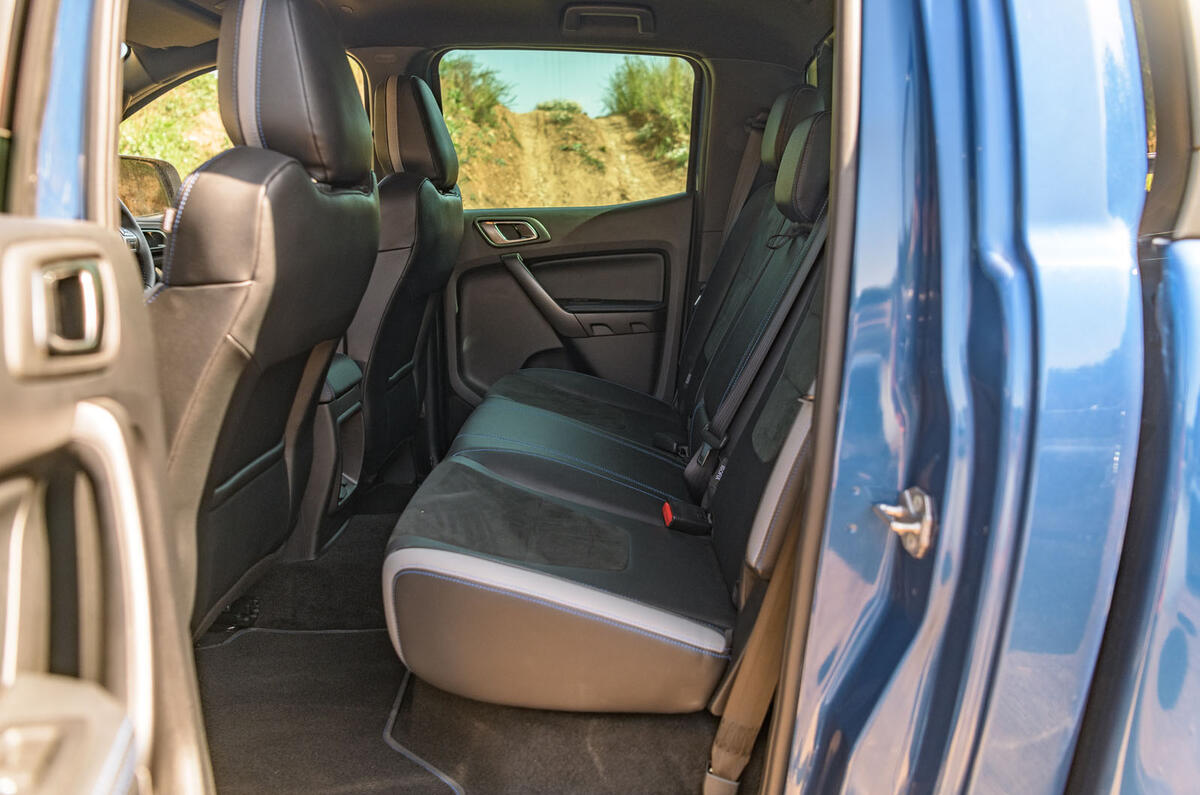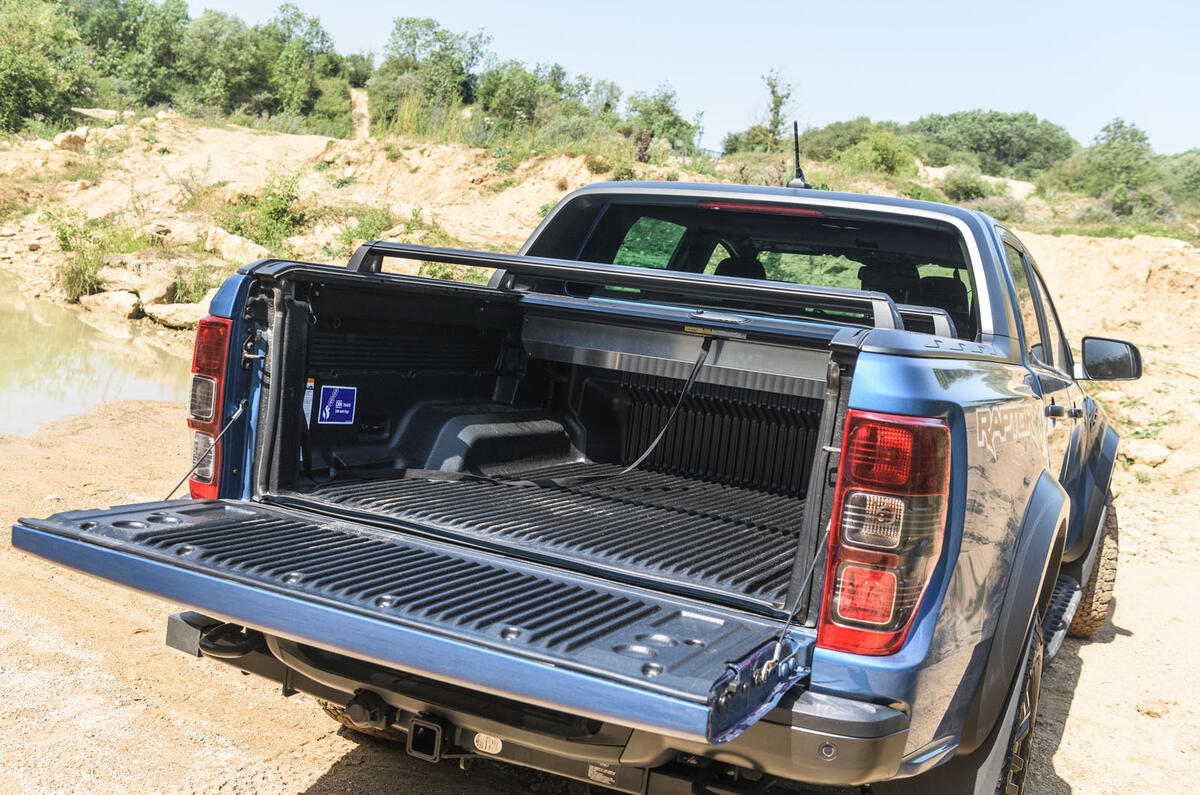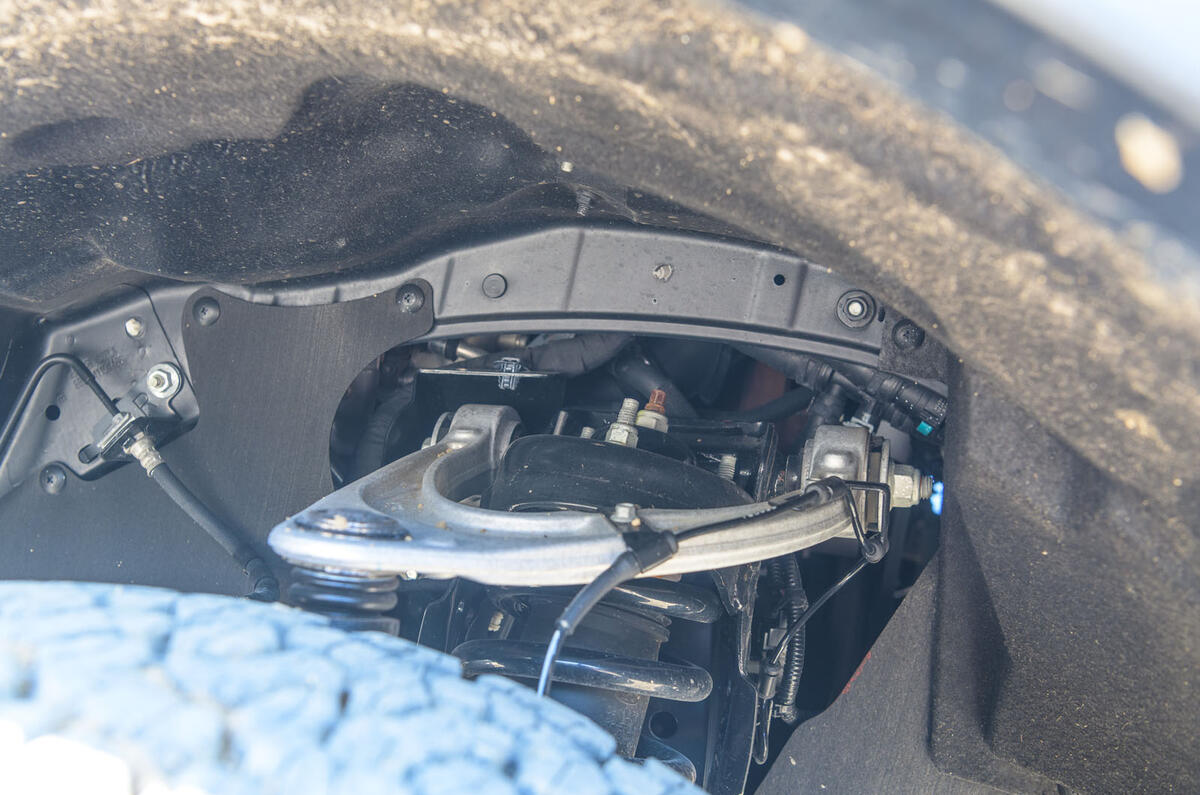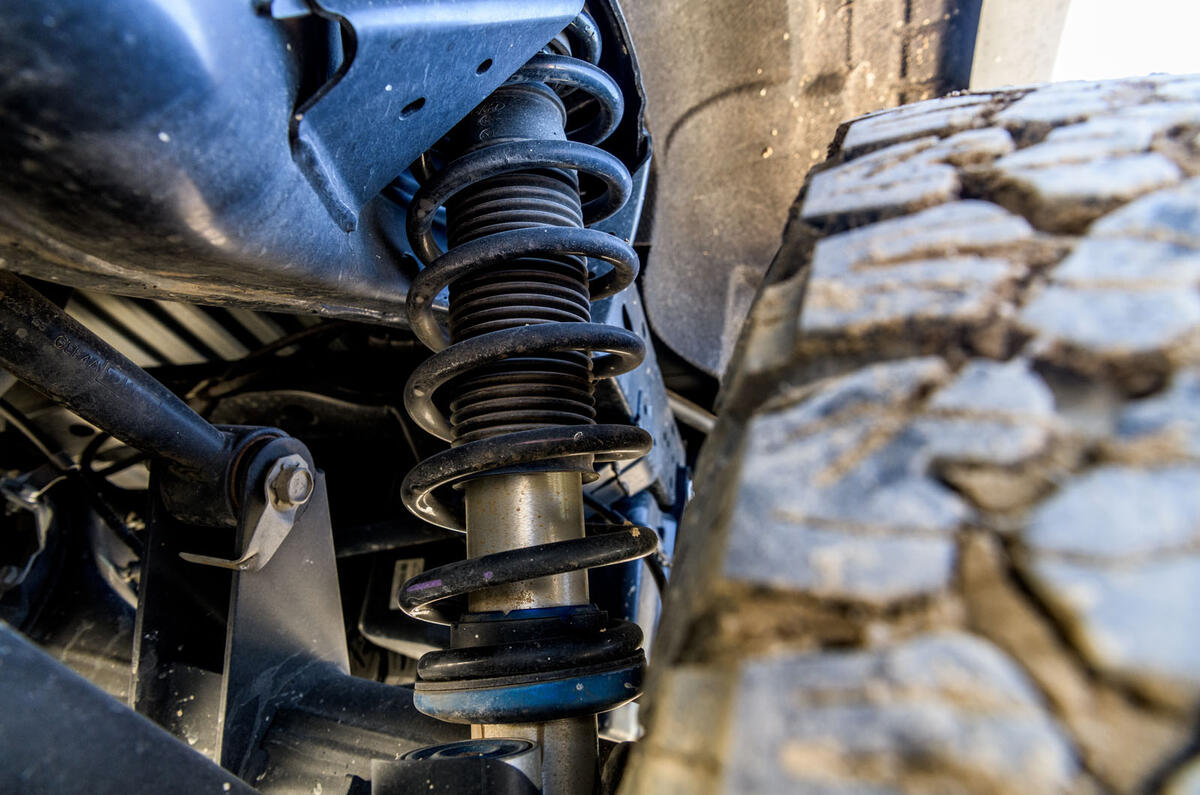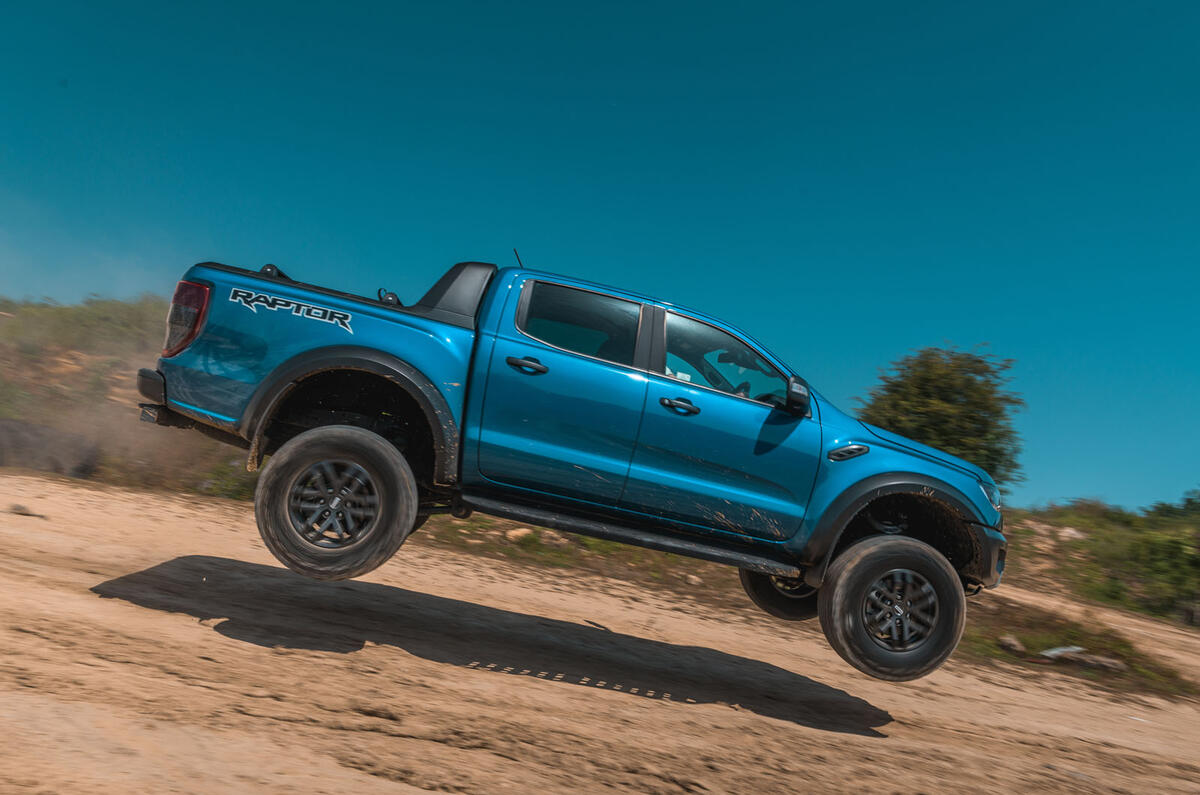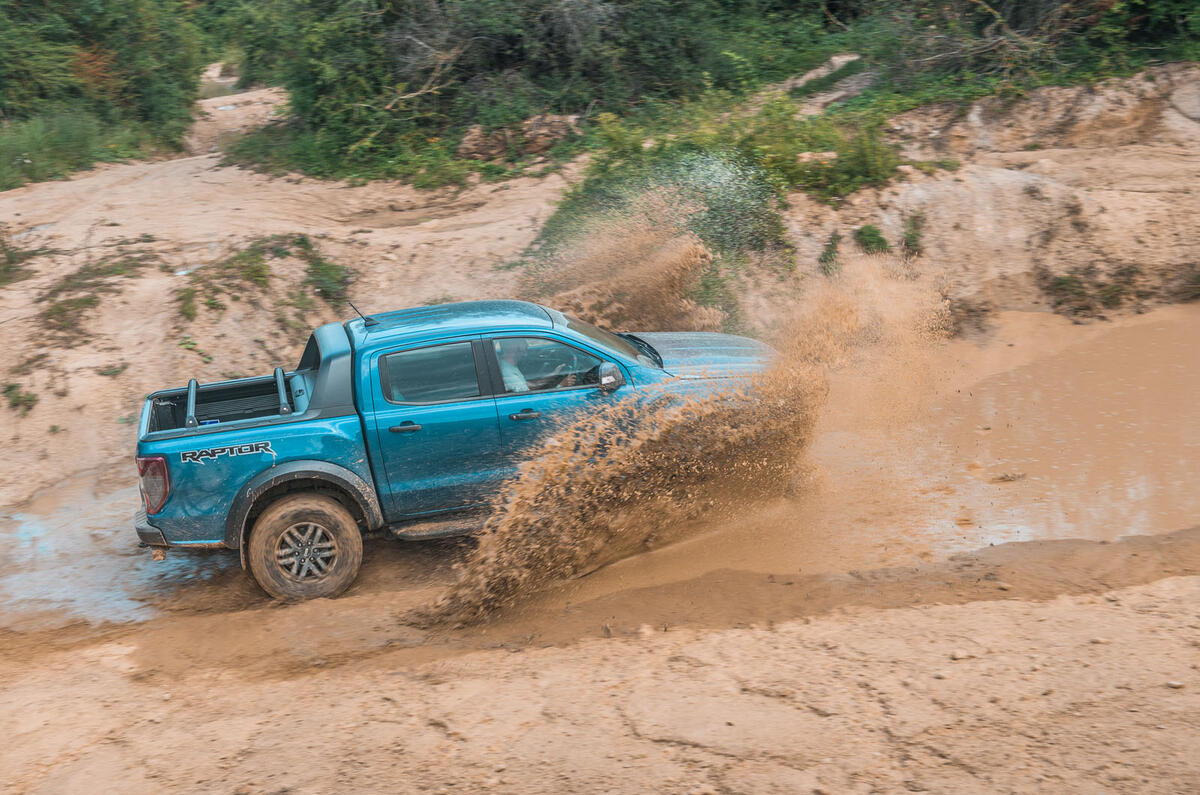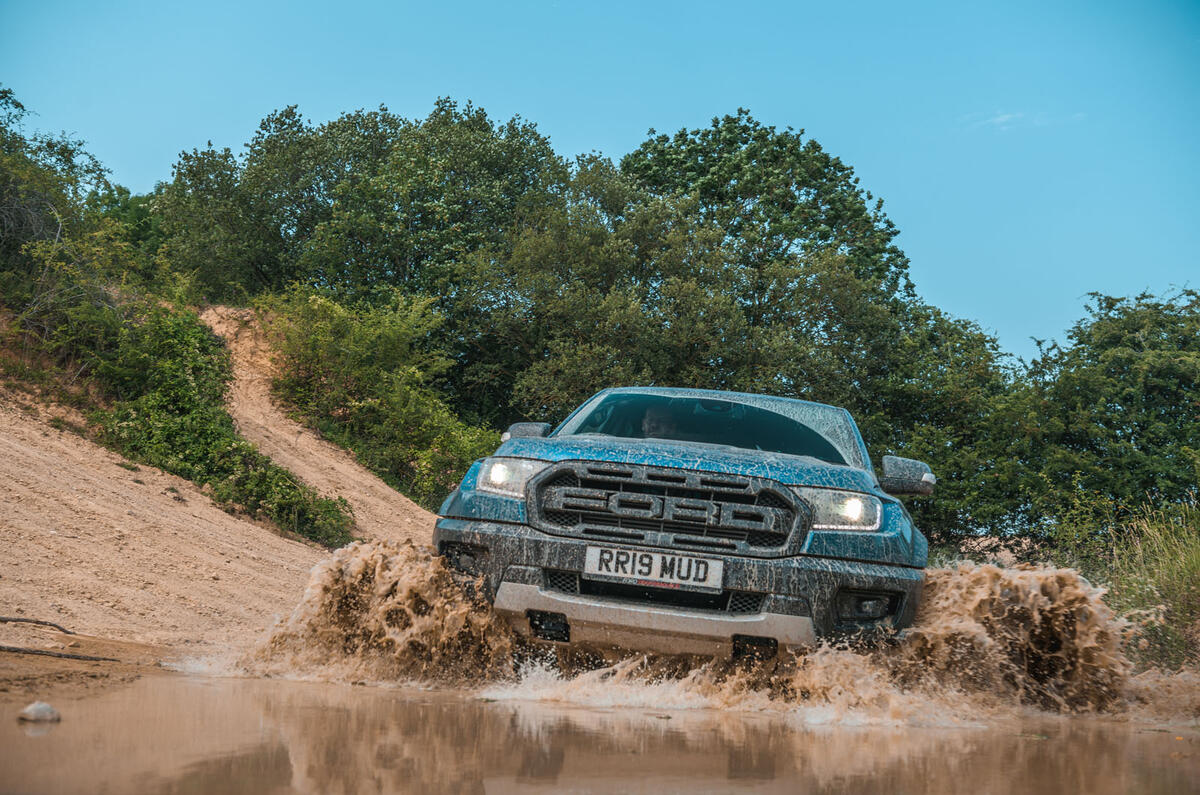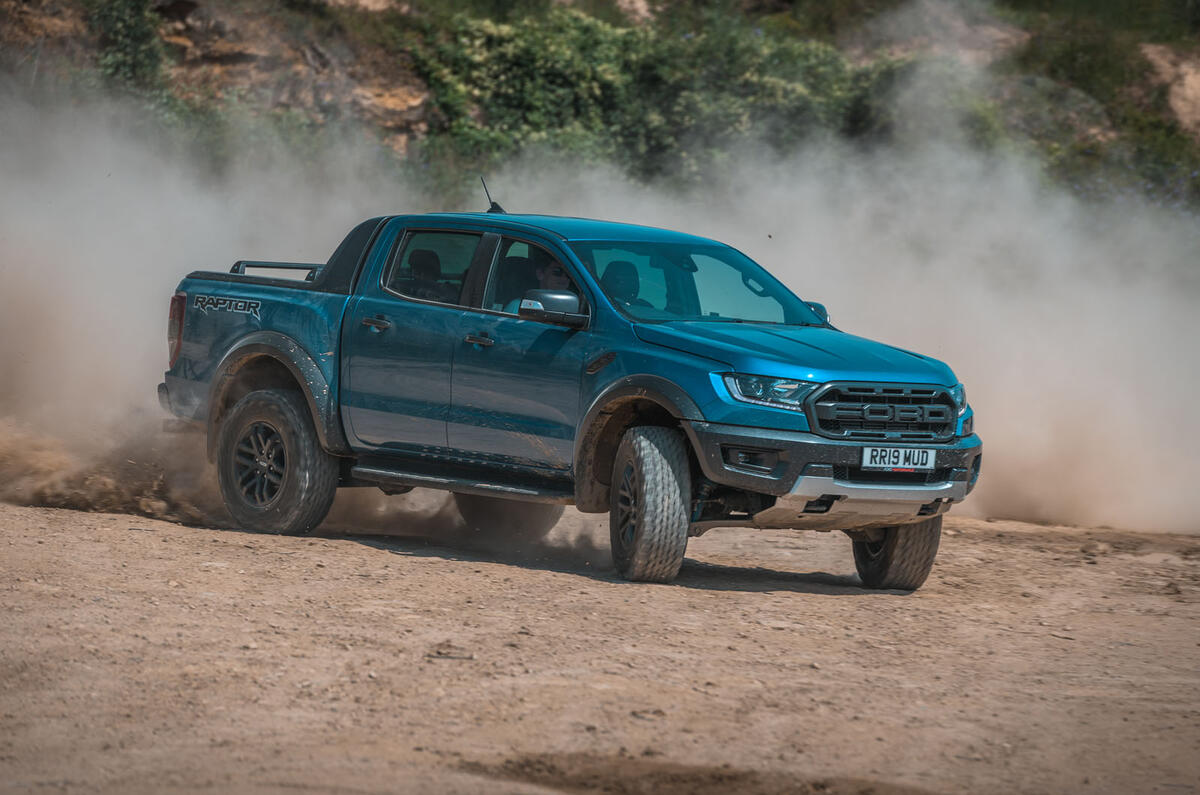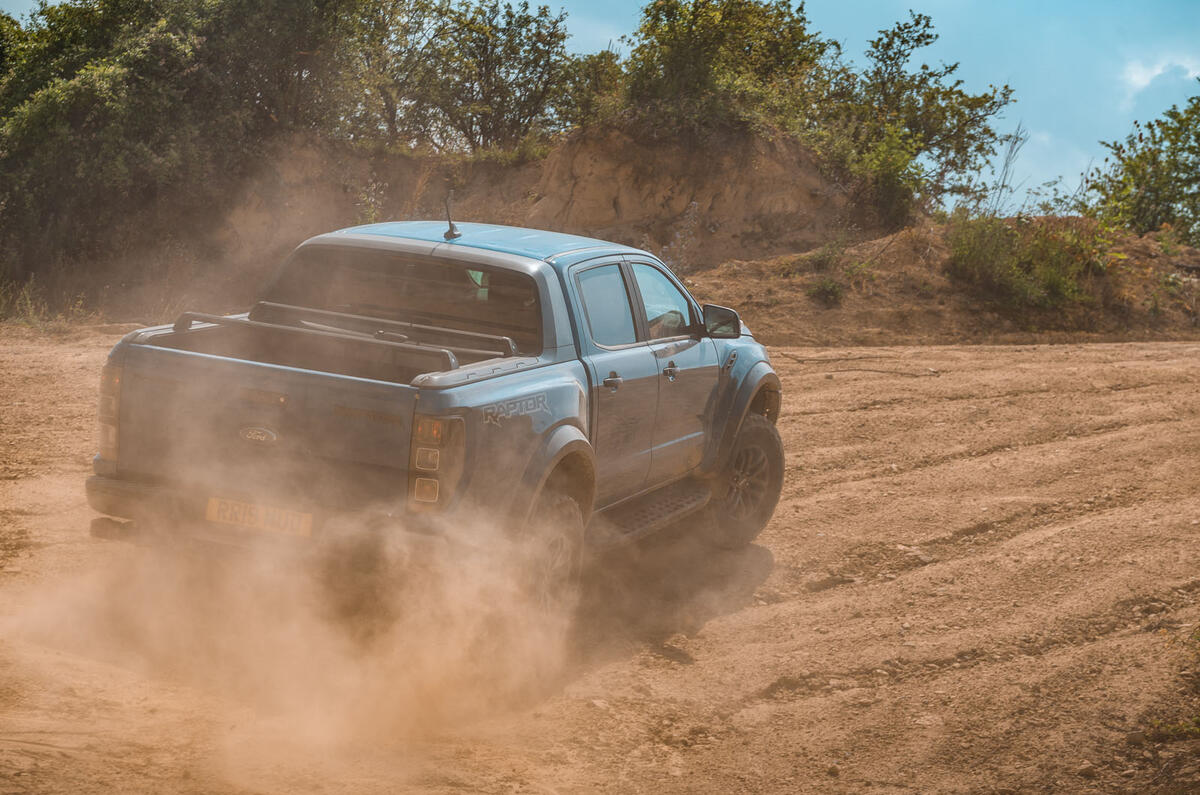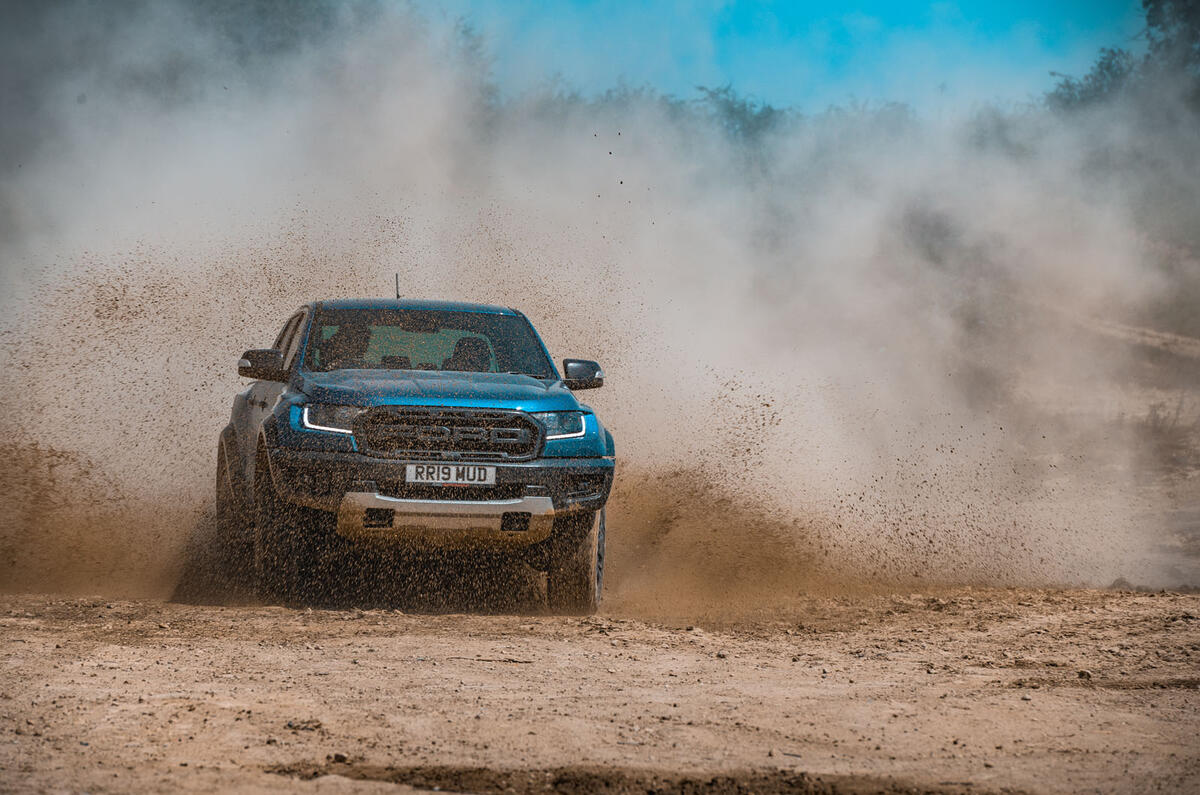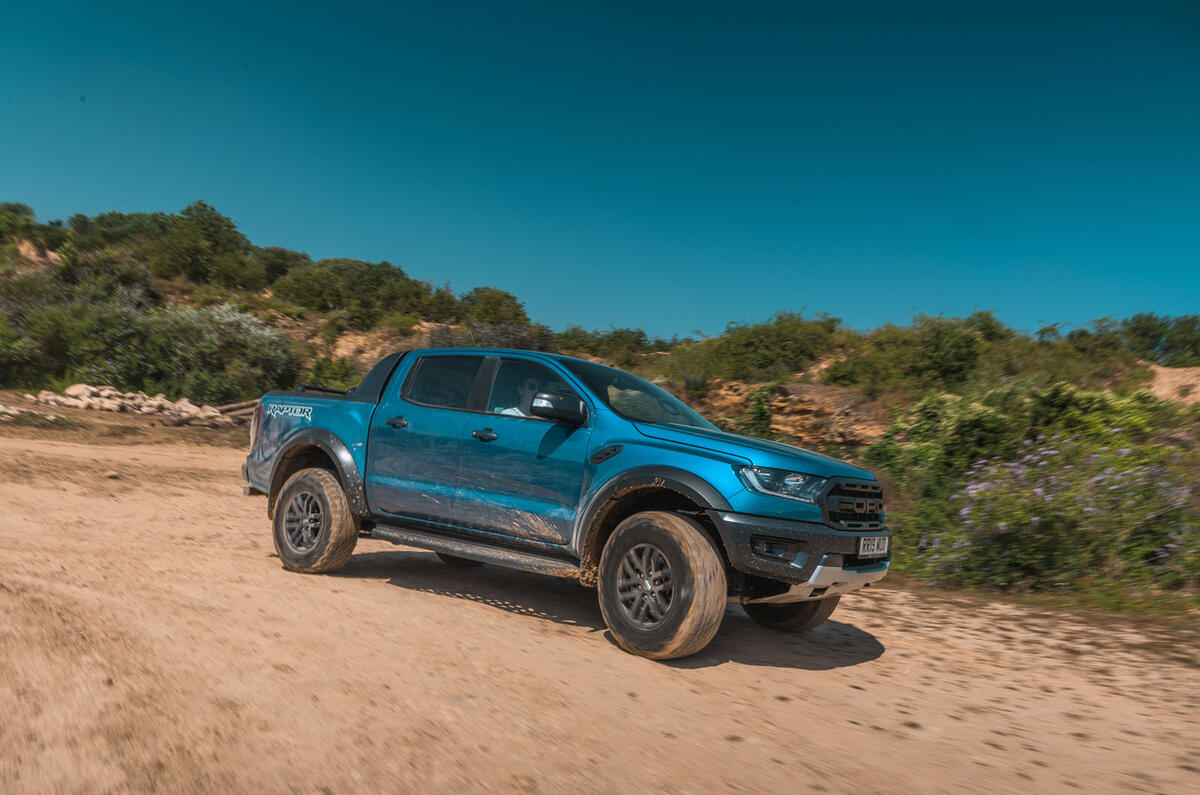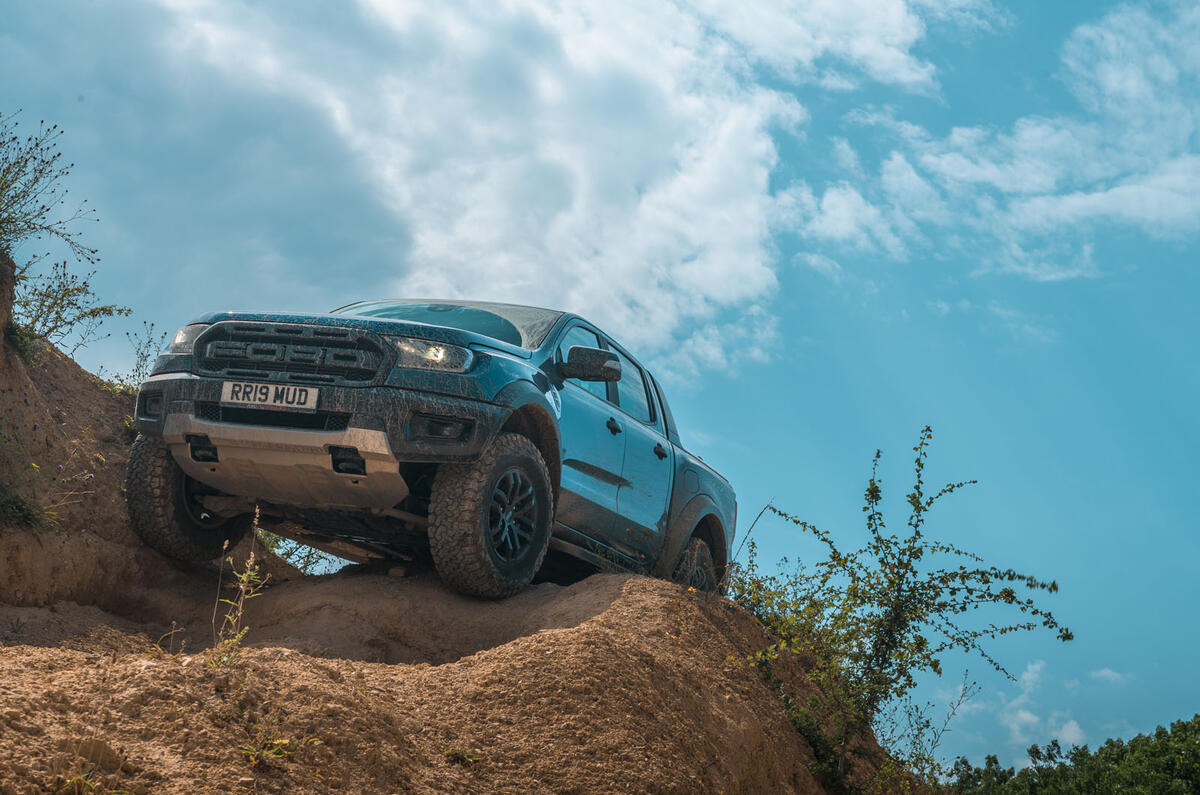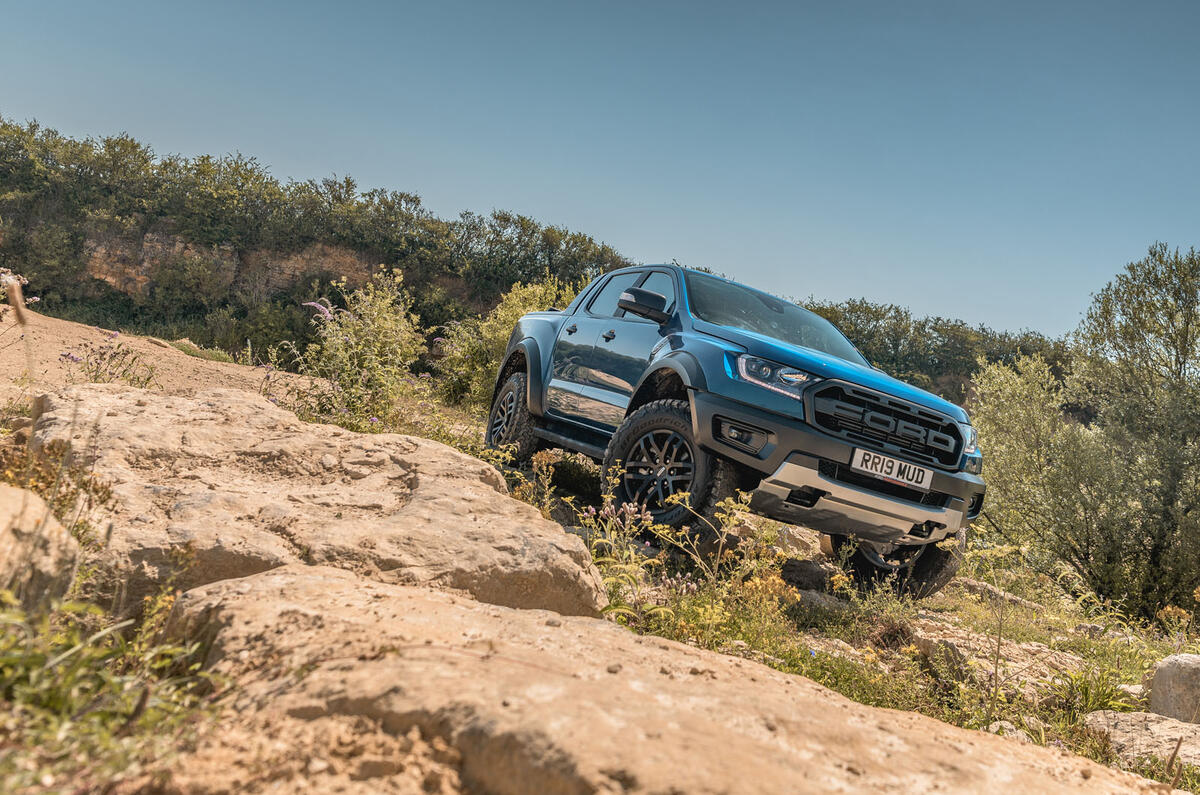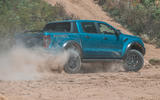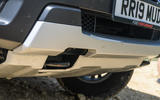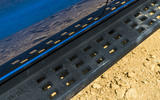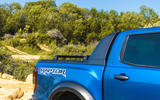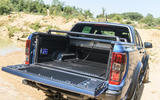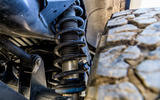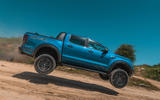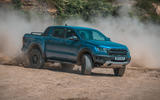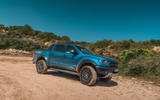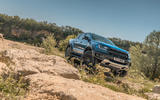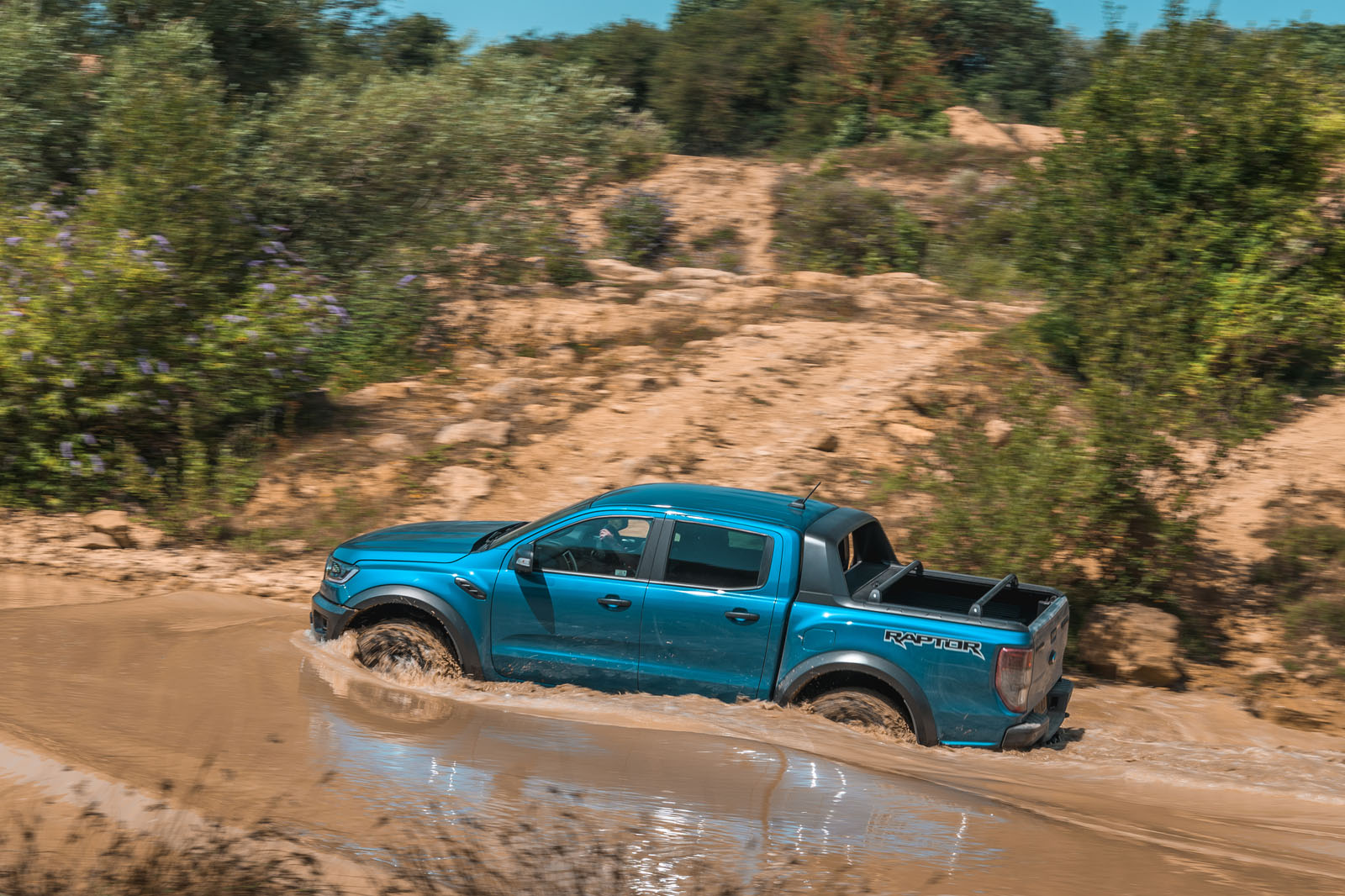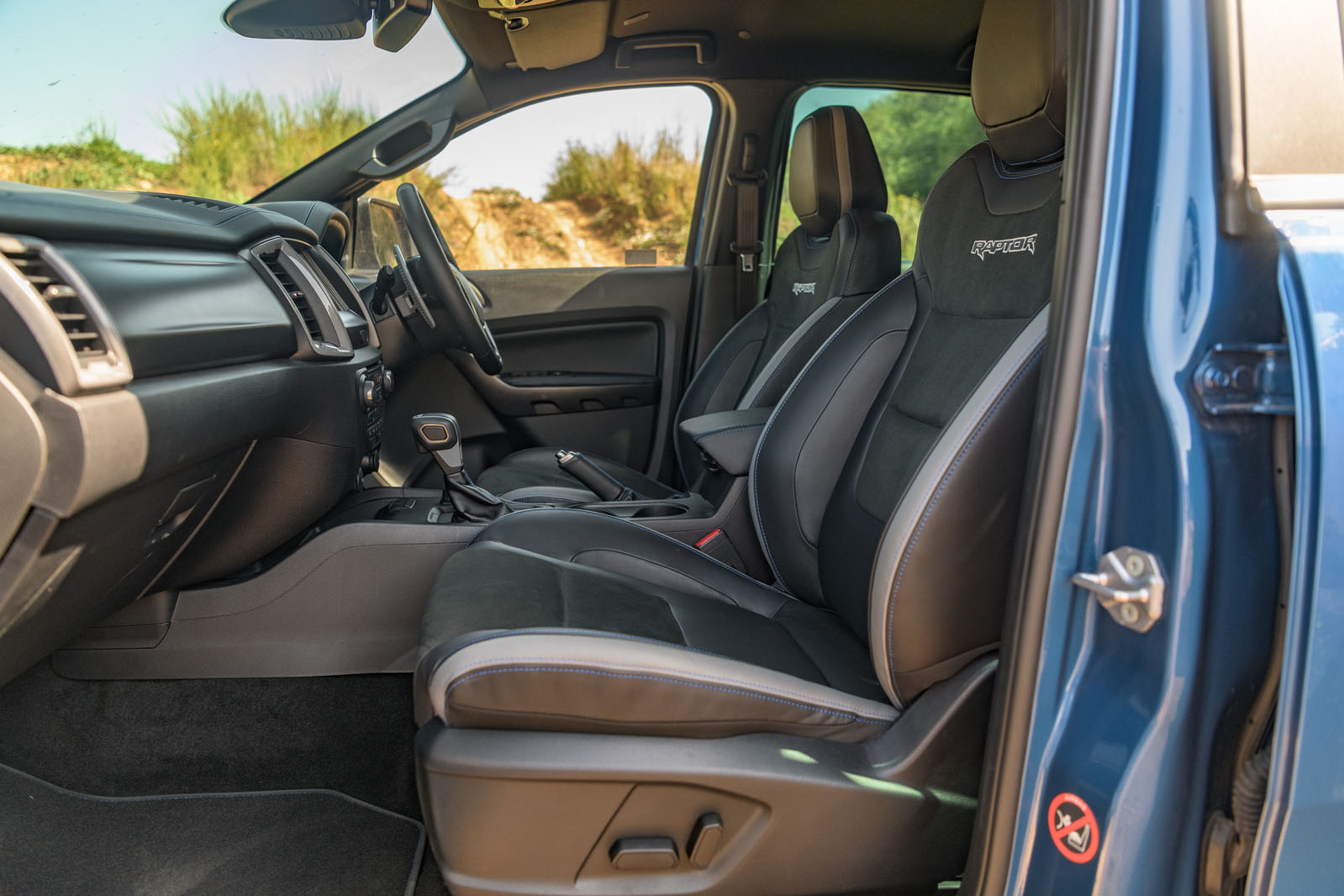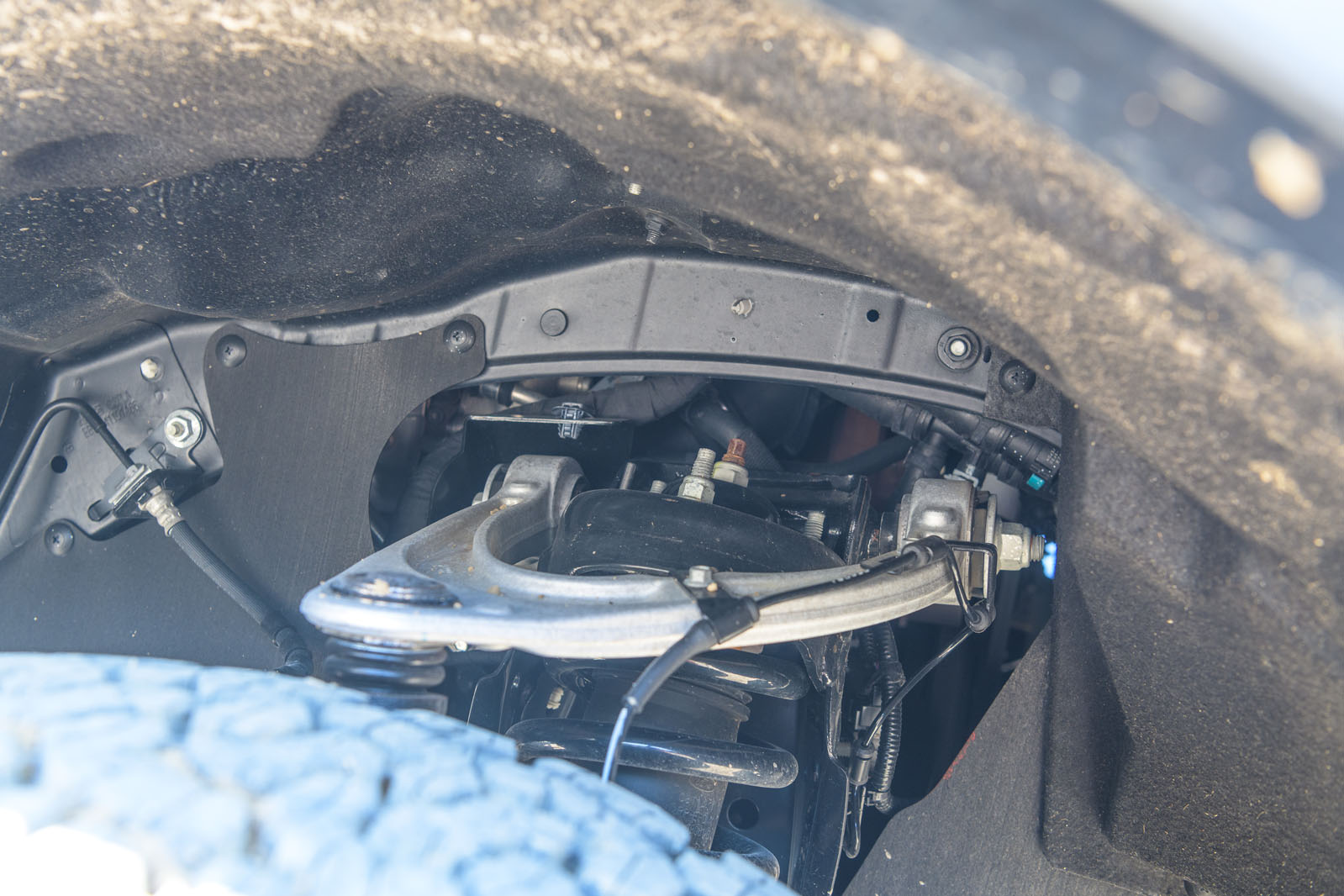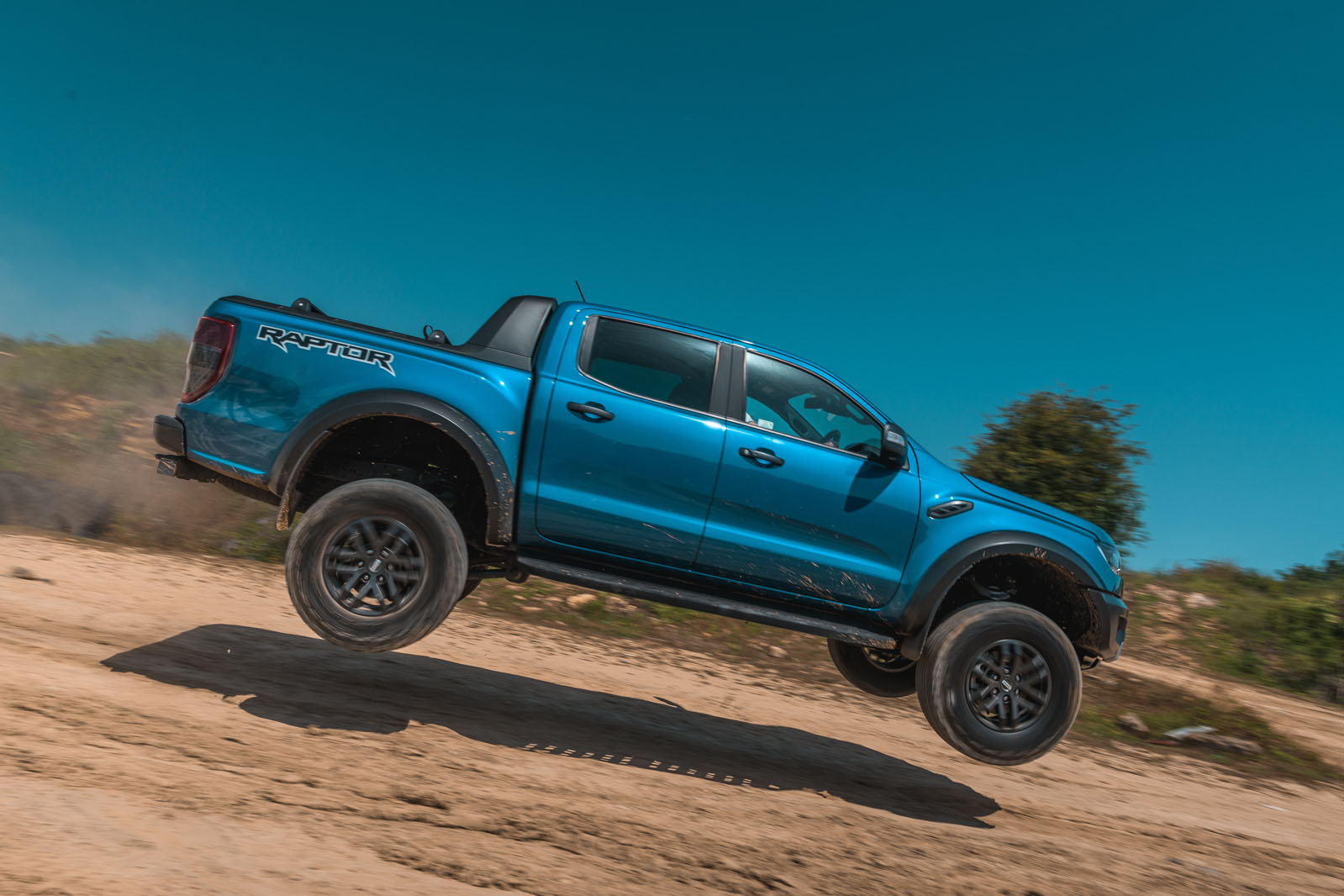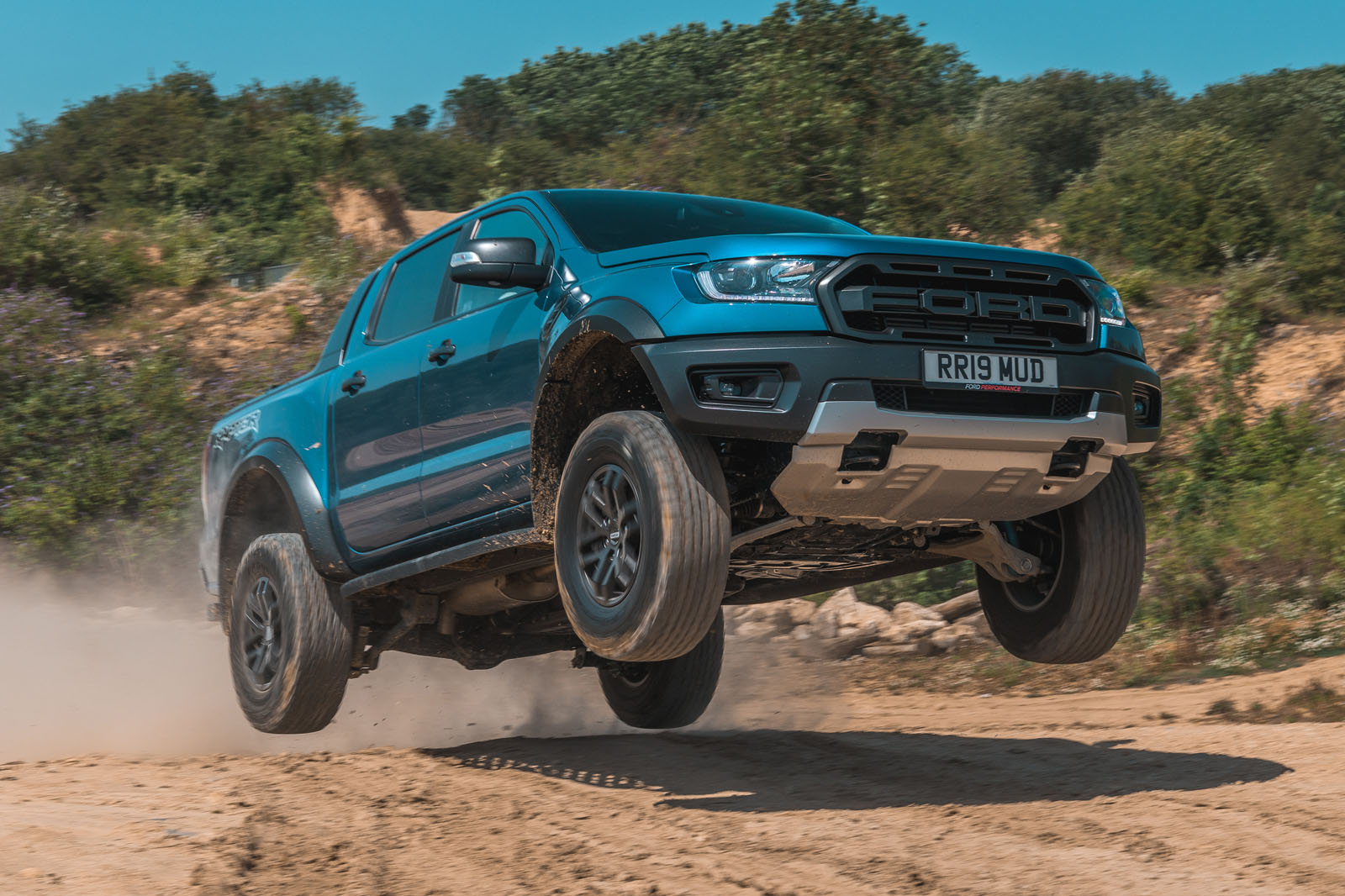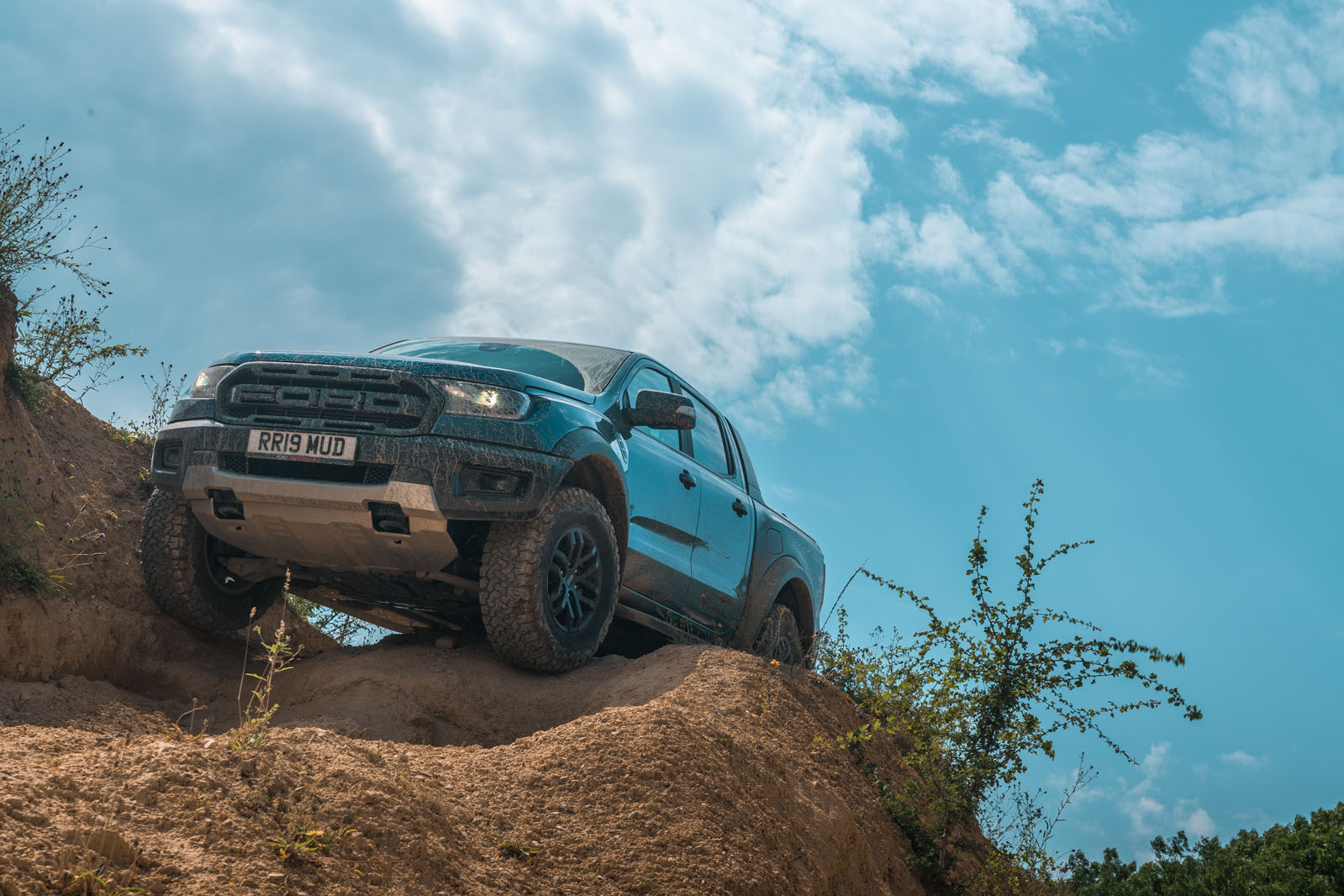When you climb into a performance car based on a regular family vehicle, you know what you’ll get: piano black plastics or fake carbonfibre in place of some more dainty trims, maybe some Alcantara, and aluminium inserts on pedals, maybe with a bit of red stitching here and there. For the Raptor, kinda think the same, only rather more subtly, and with Ford’s trademark blue writ through it.
So the Alcantara is there, on the seat pads, in seats that are Raptor branded and more figure hugging than those of most pick-ups but, thankfully, not full-on buckets. The steering wheel is large and round and marked with a red stripe at top dead centre, which, given 3.5 turns between locks and the nature of this car, is way more sensible than it is on a hot hatch. Gearchange paddles are magnesium, and blue stitching abounds, extending even to the dash top, which, in an effort to raise a budget pick-up’s interior to £50,000 levels, features a leather finish.
All in, these changes work well enough: throw in a comprehensive touchscreen and media system (see ‘Multimedia’, right) and the Raptor – spacious front and back, although the rear is better for two than three – does a passable enough impression of a ‘proper’ car rather than a commercial vehicle, provided you’re prepared to overlook some of the cheaper, more brittle plastics.
Behind the passenger space is a load bay the same size as the regular Raptor’s, at 1560mm by 1575mm, on top of which you can stack various cover options. The tailgate is easier to lift than it looks, but throw in the vast ground clearance the Raptor has and you’re looking at a vehicle whose ‘boot’ is on the inaccessible side unless you’re on a stool.
The big chassis changes that make the Raptor so impressive dynamically also mean the payload takes a hit. The towing limit reduces from 3500kg to 2500kg, which might not be a huge issue, but the load bed capacity will more likely be. It’s reduced from over a tonne, which makes VAT reclaimable in the UK, to just 758kg, meaning you can’t get the VAT back because the Raptor’s no longer a commercial vehicle. So it needs to really do what it takes as a performance car.
The Ranger Raptor comes equipped with Ford’s Sync 3 infotainment suite, which includes sat-nav, DAB radio, Bluetooth connectivity, Android Auto and Apple CarPlay. These features are all operated via the centrally located 8.0in touchscreen, which admittedly doesn’t offer up the most sophisticated graphics in the world but is, for the most part, intuitive and easy to use. Shortcut buttons along the bottom of the screen allow for quick access between menus, although these disappear when using Apple CarPlay or Android Auto. The home button vanishes, too, which makes the process of jumping back to the main screen a more convoluted process than it needs to be.
Still, there are some clever features here, such as a wi-fi hotspot and a ‘breadcrumb’ setting for the sat-nav. This plots your progress on the map so you can more easily retrace your steps when journeying far from the beaten track.


